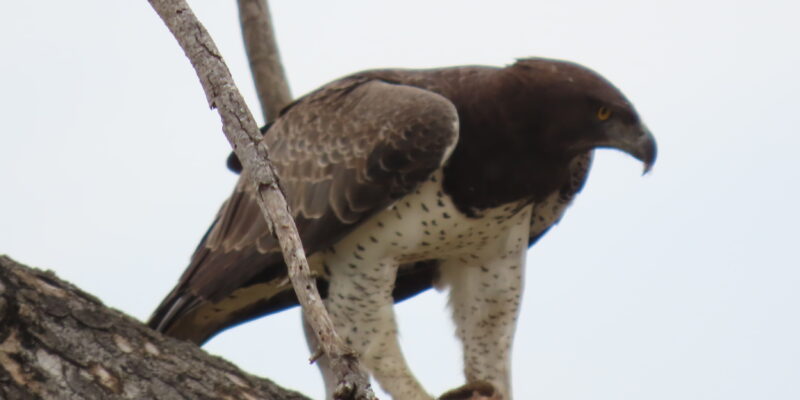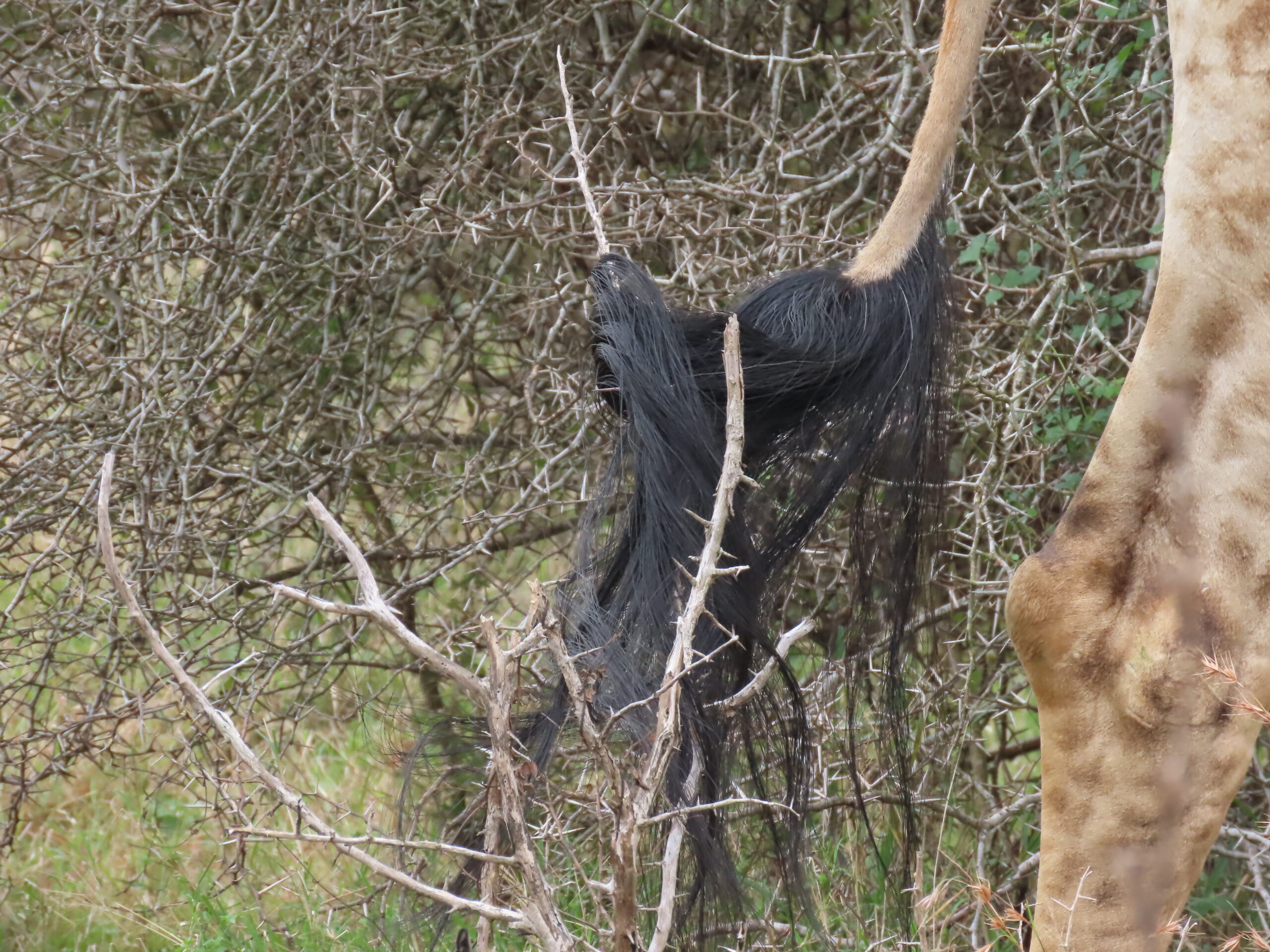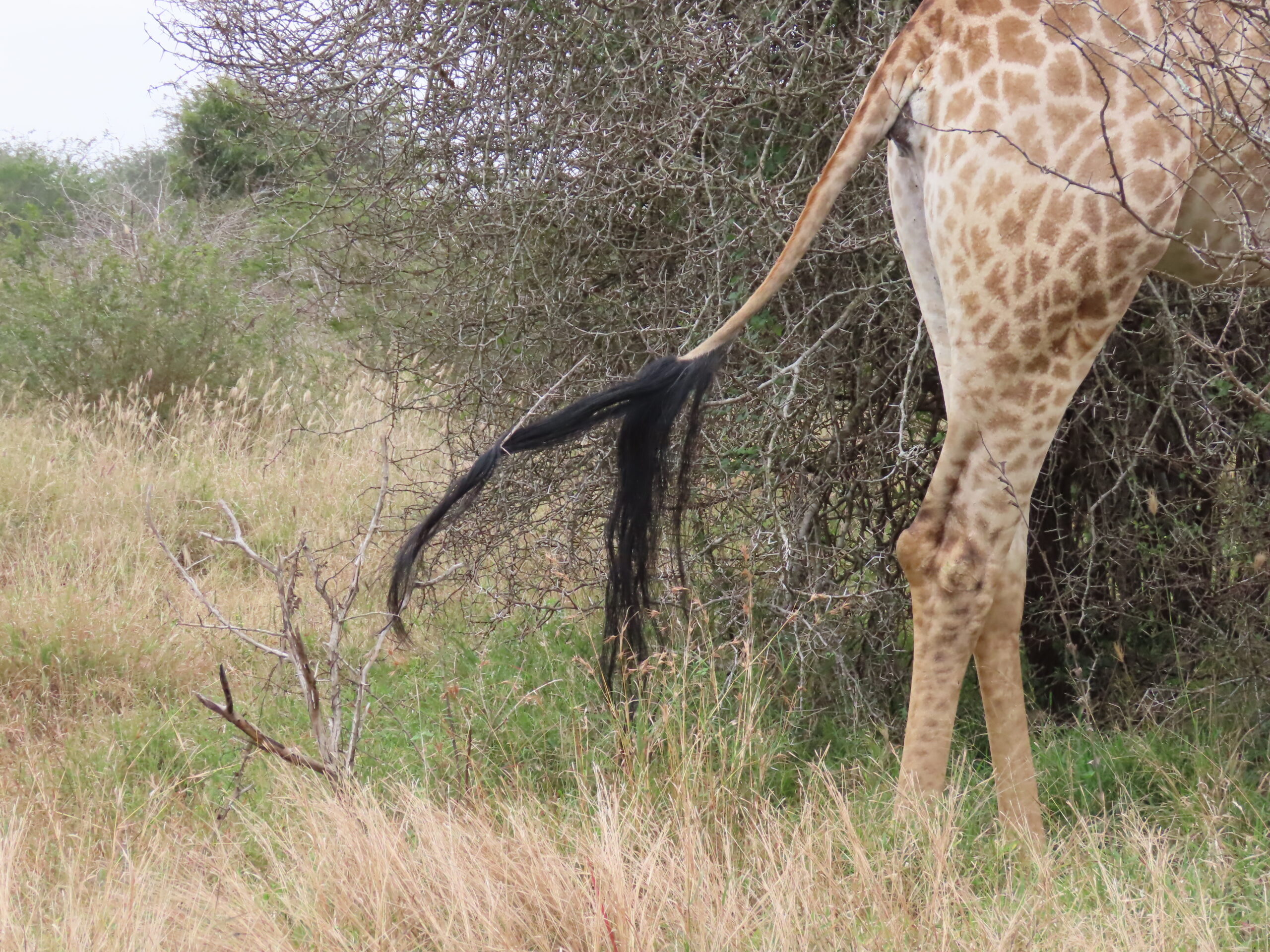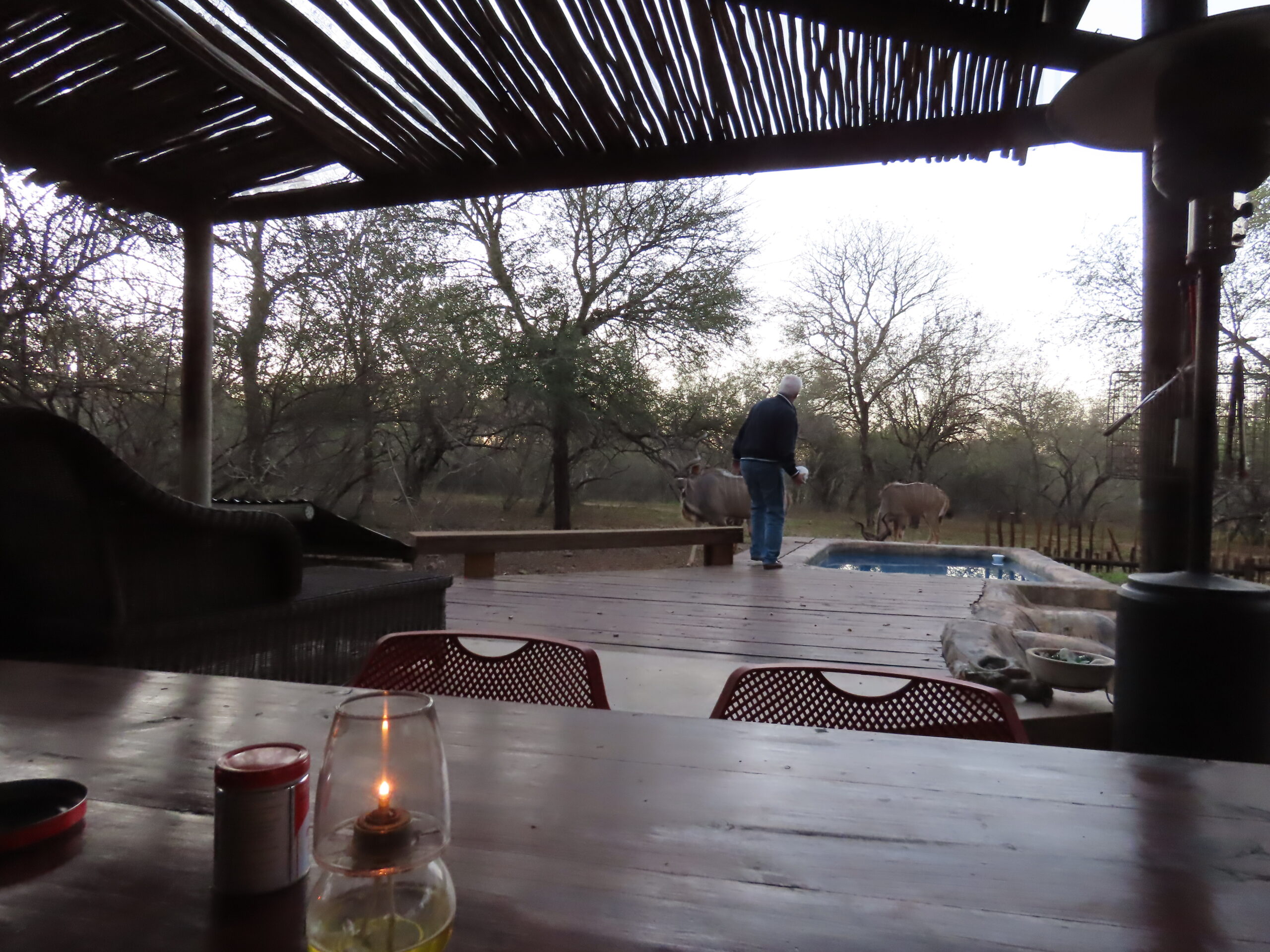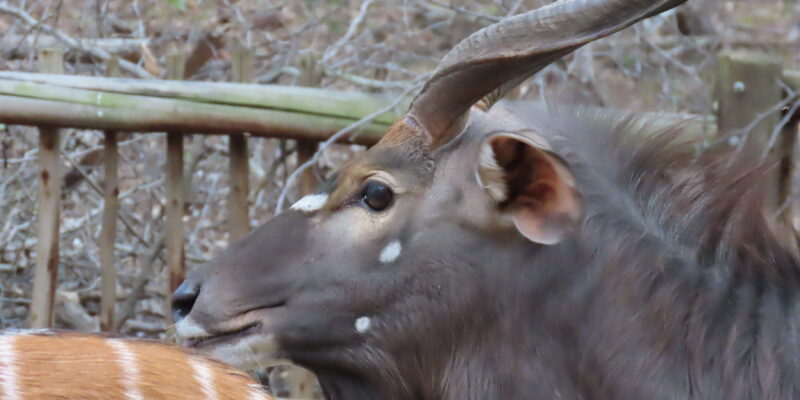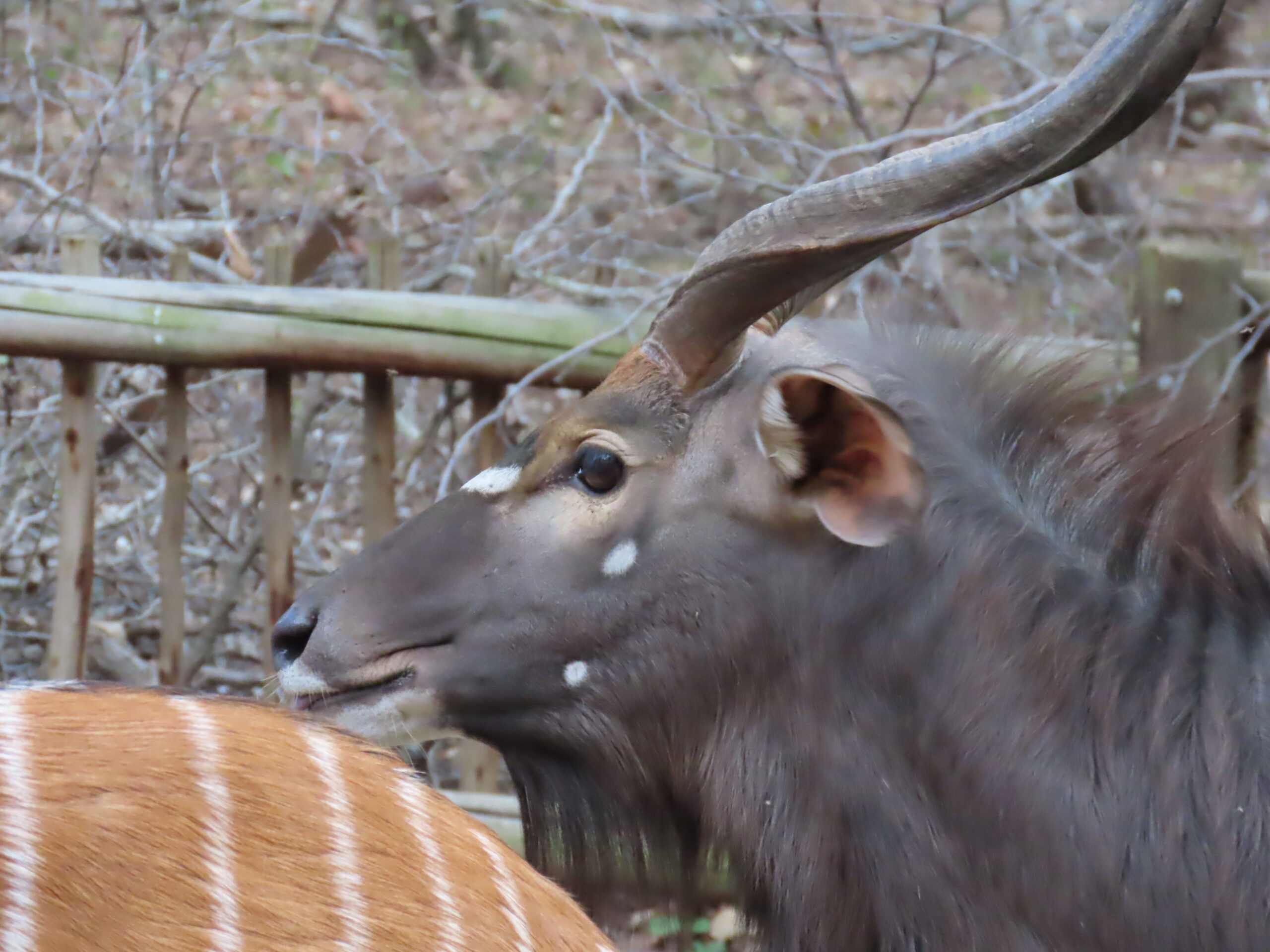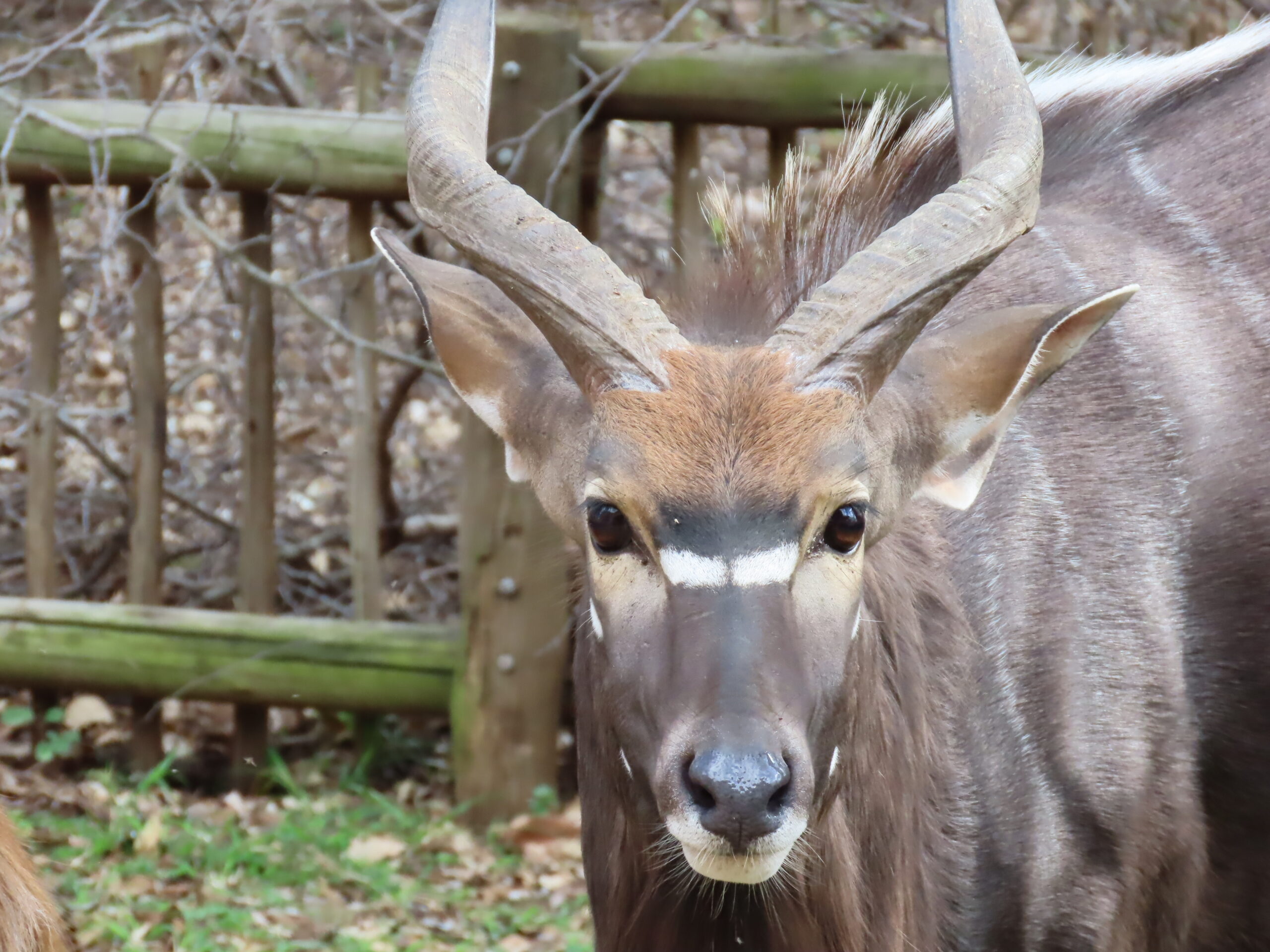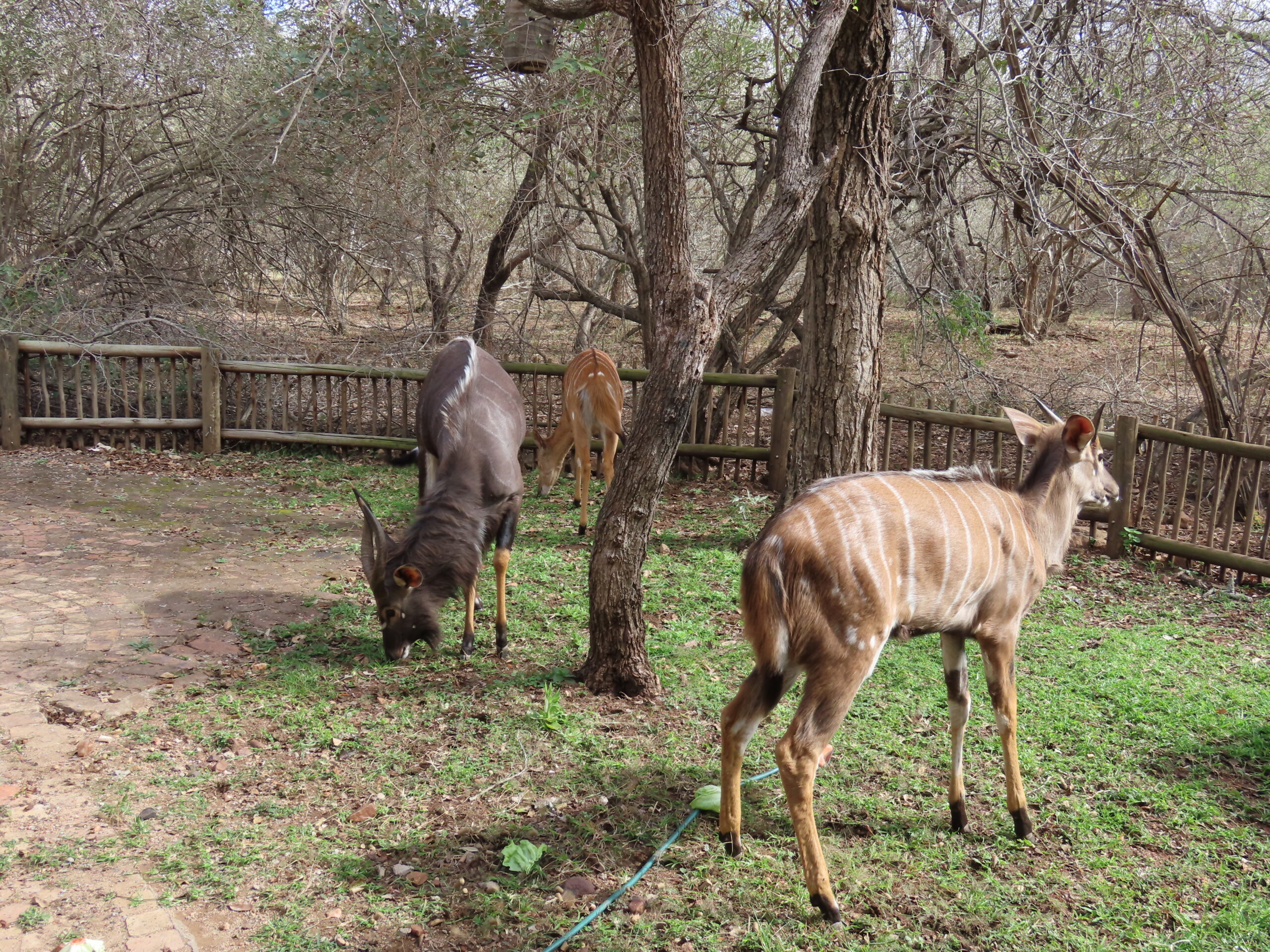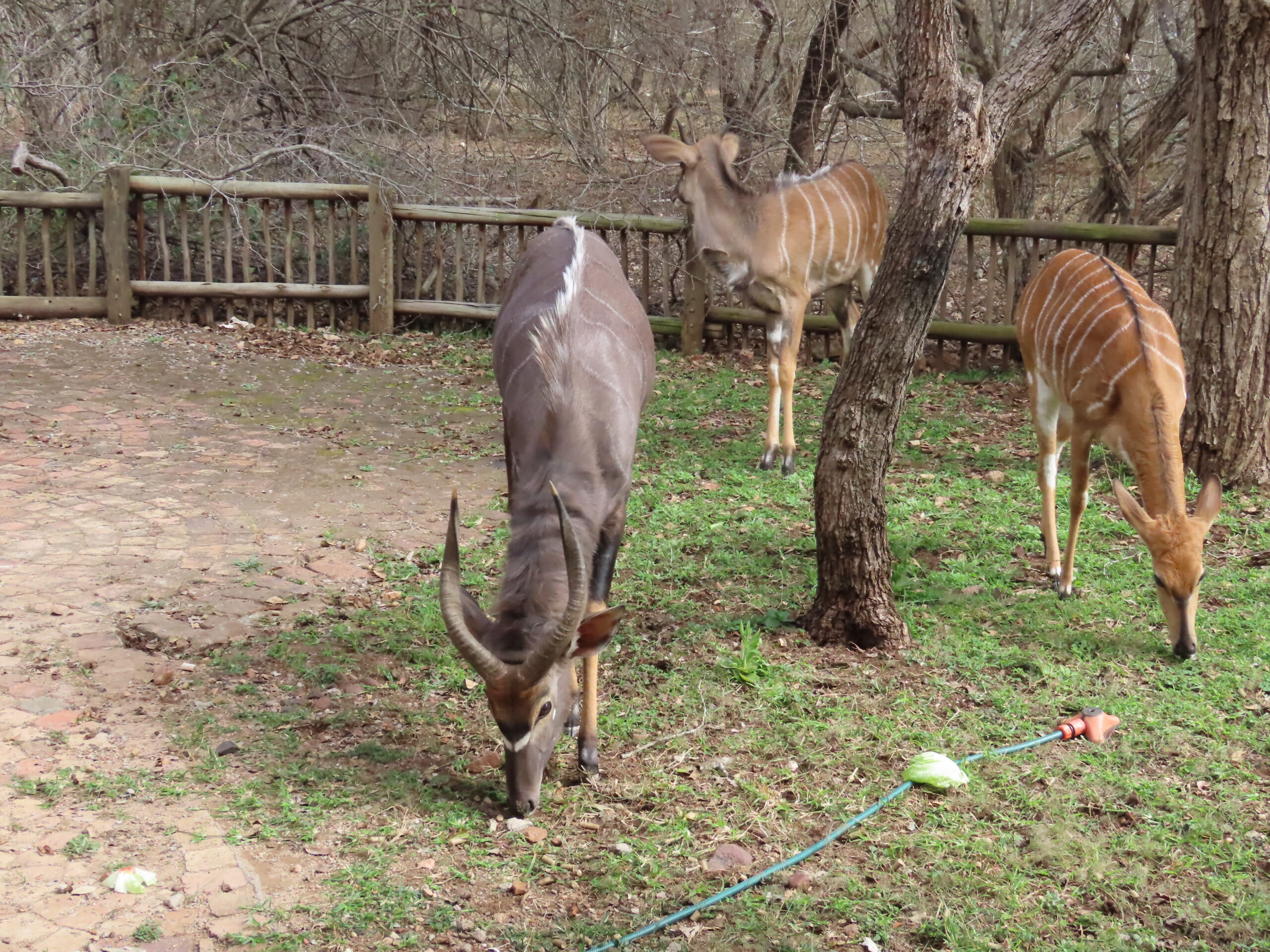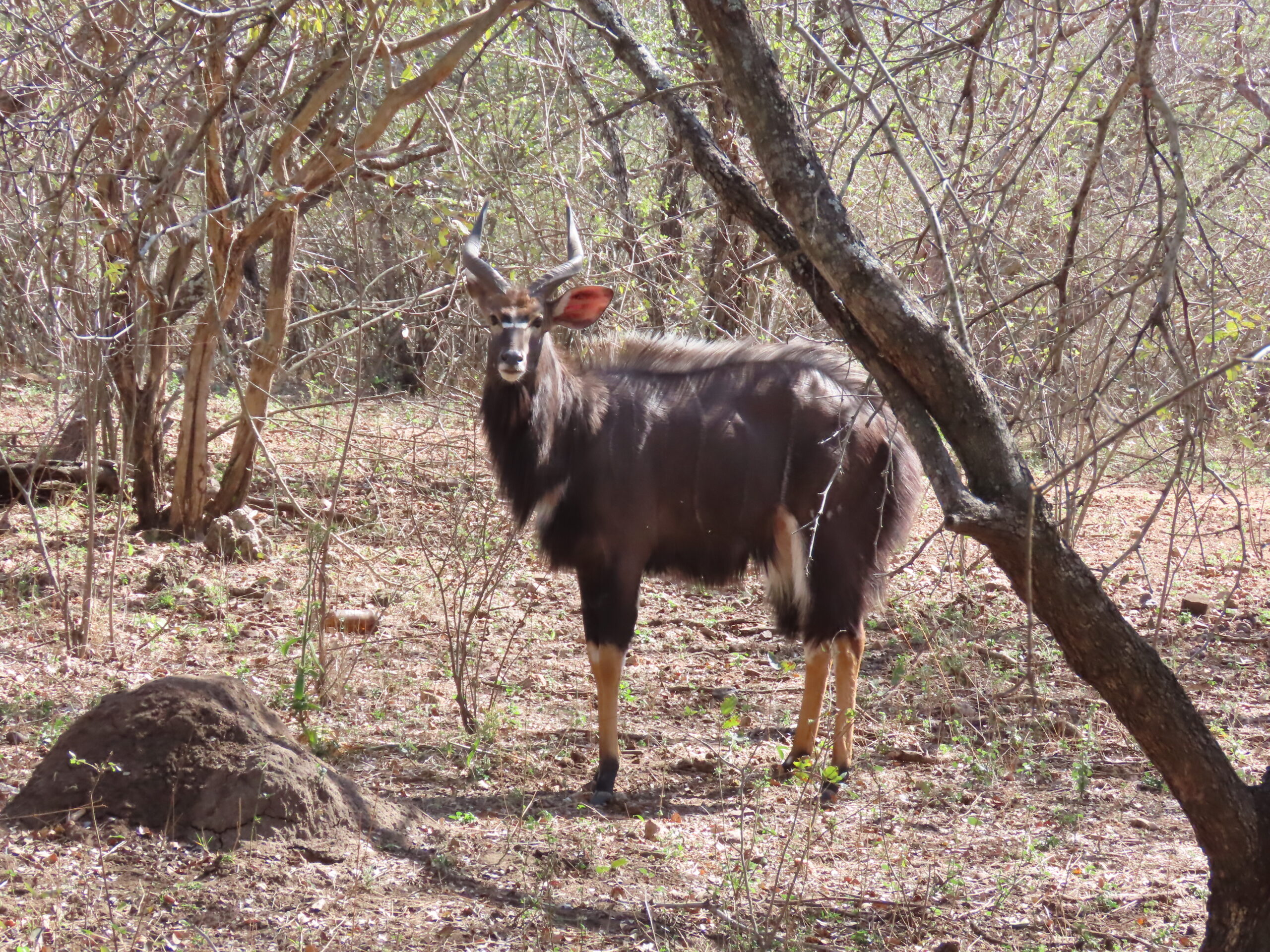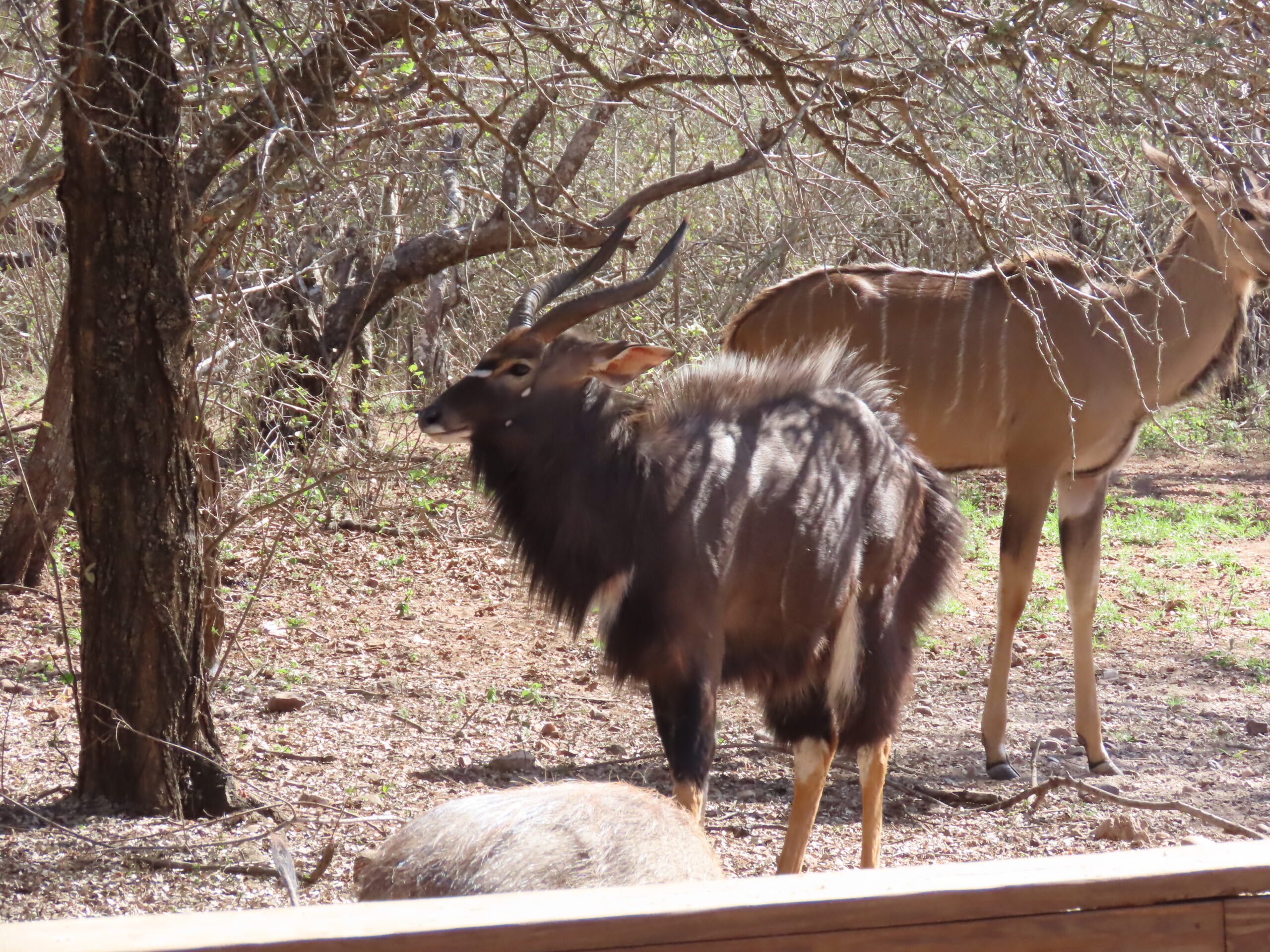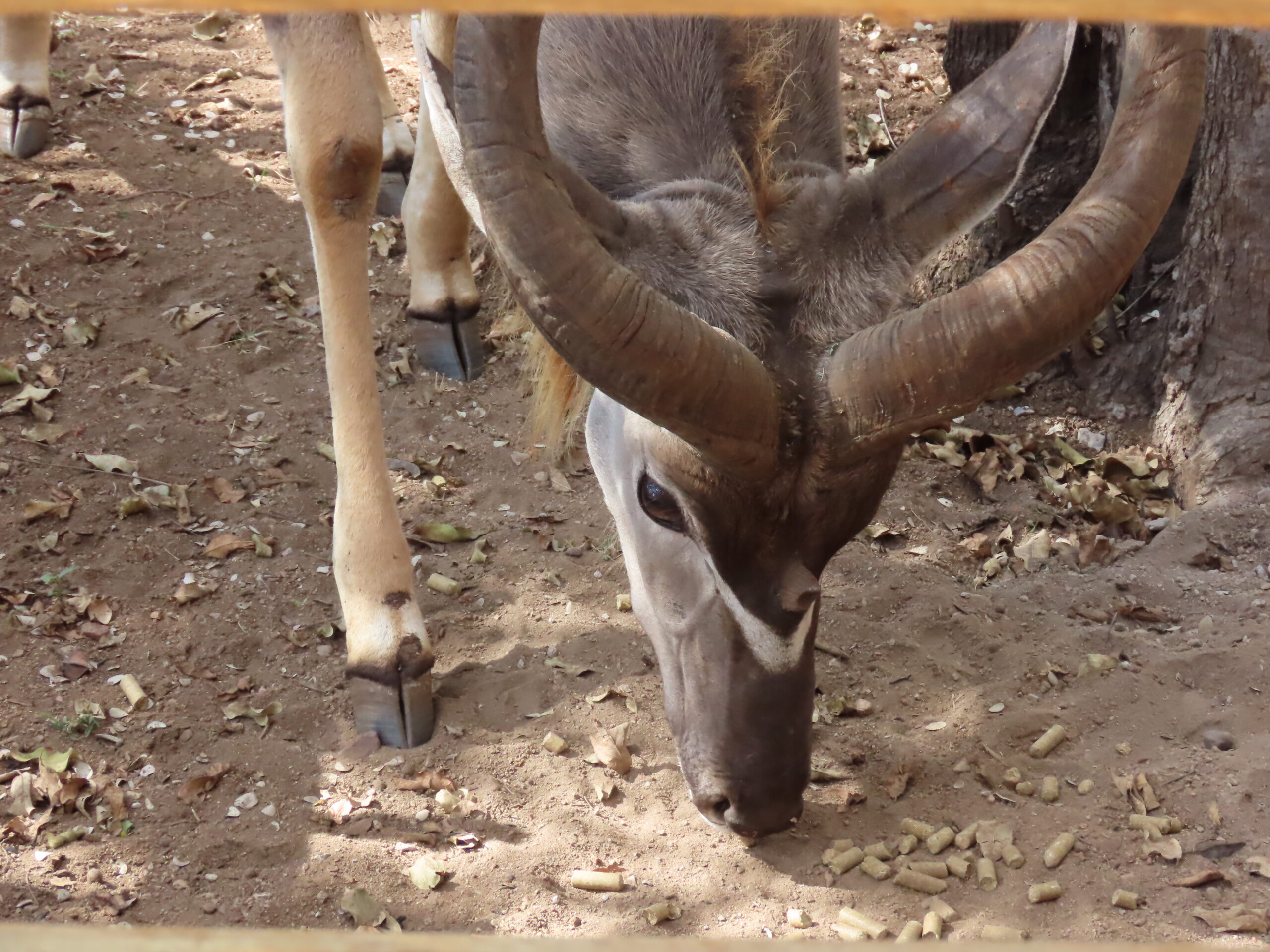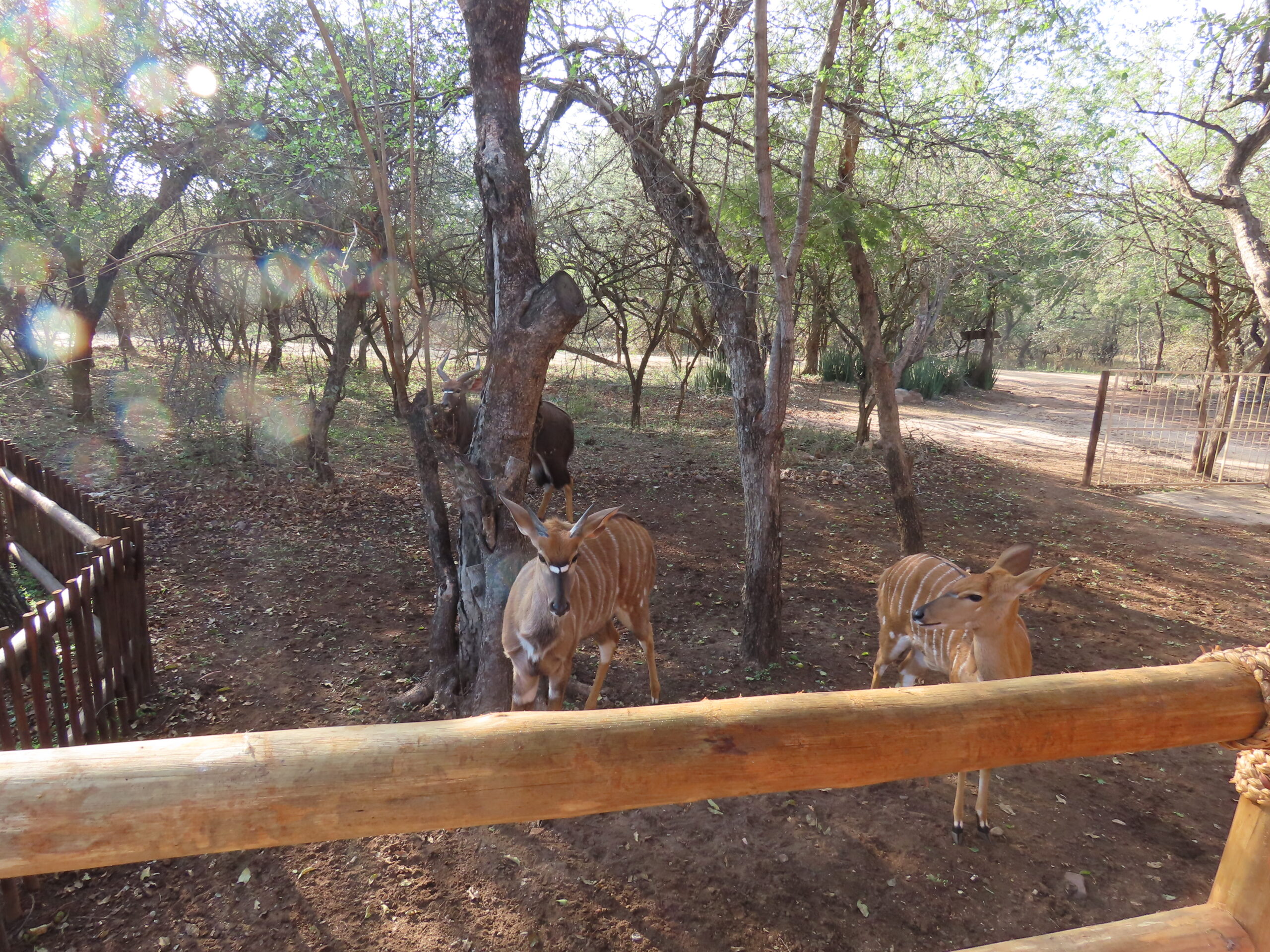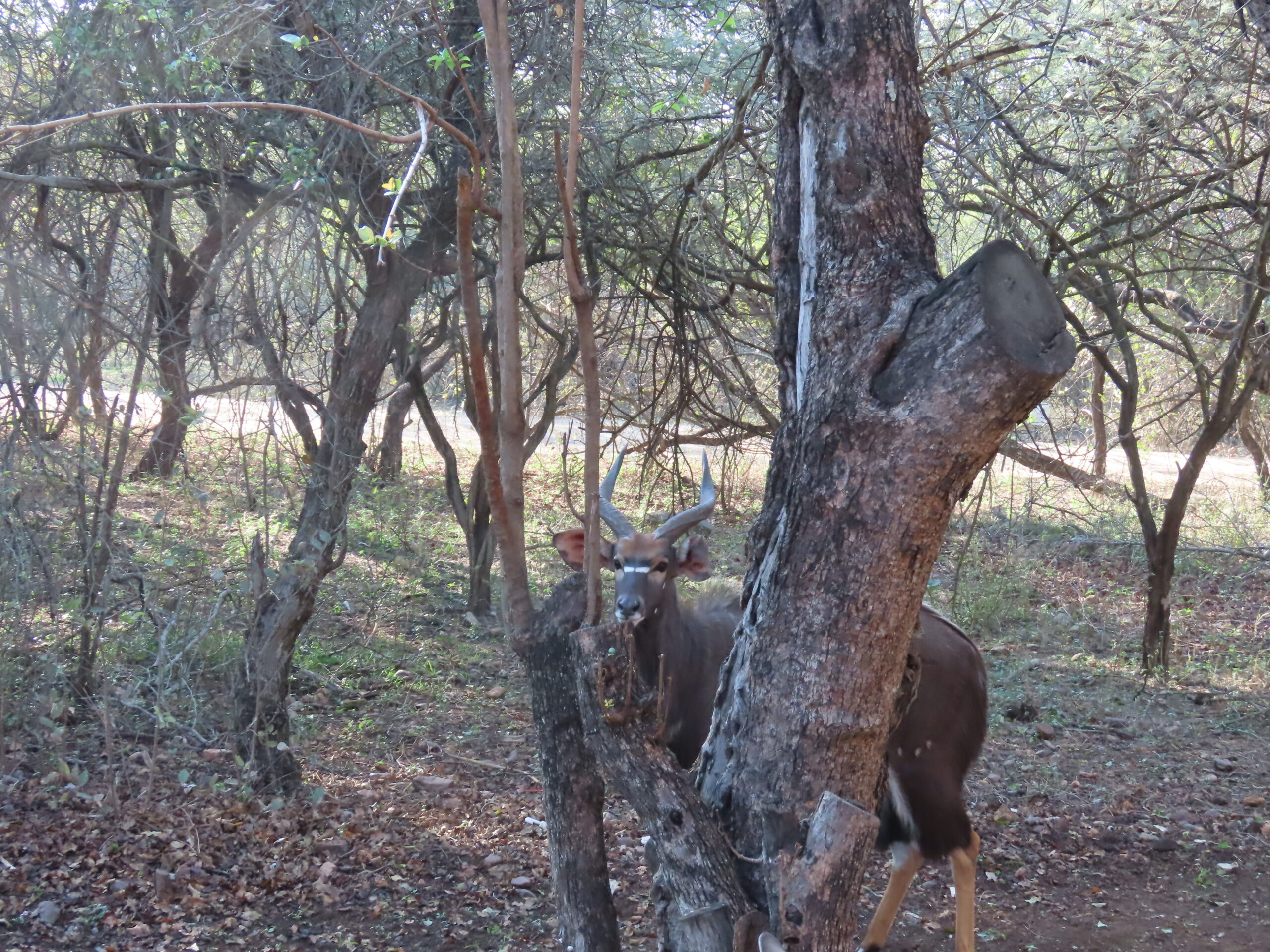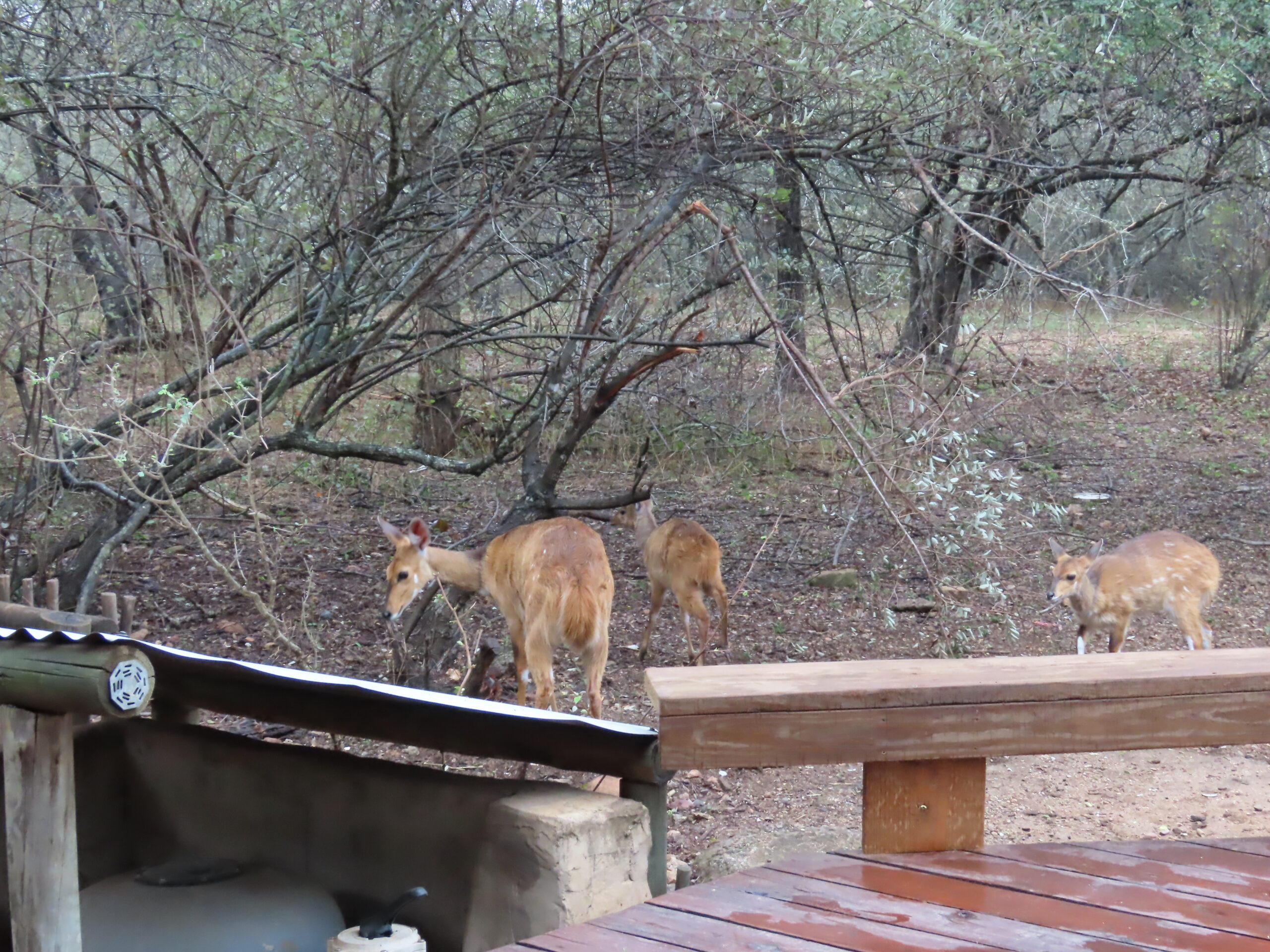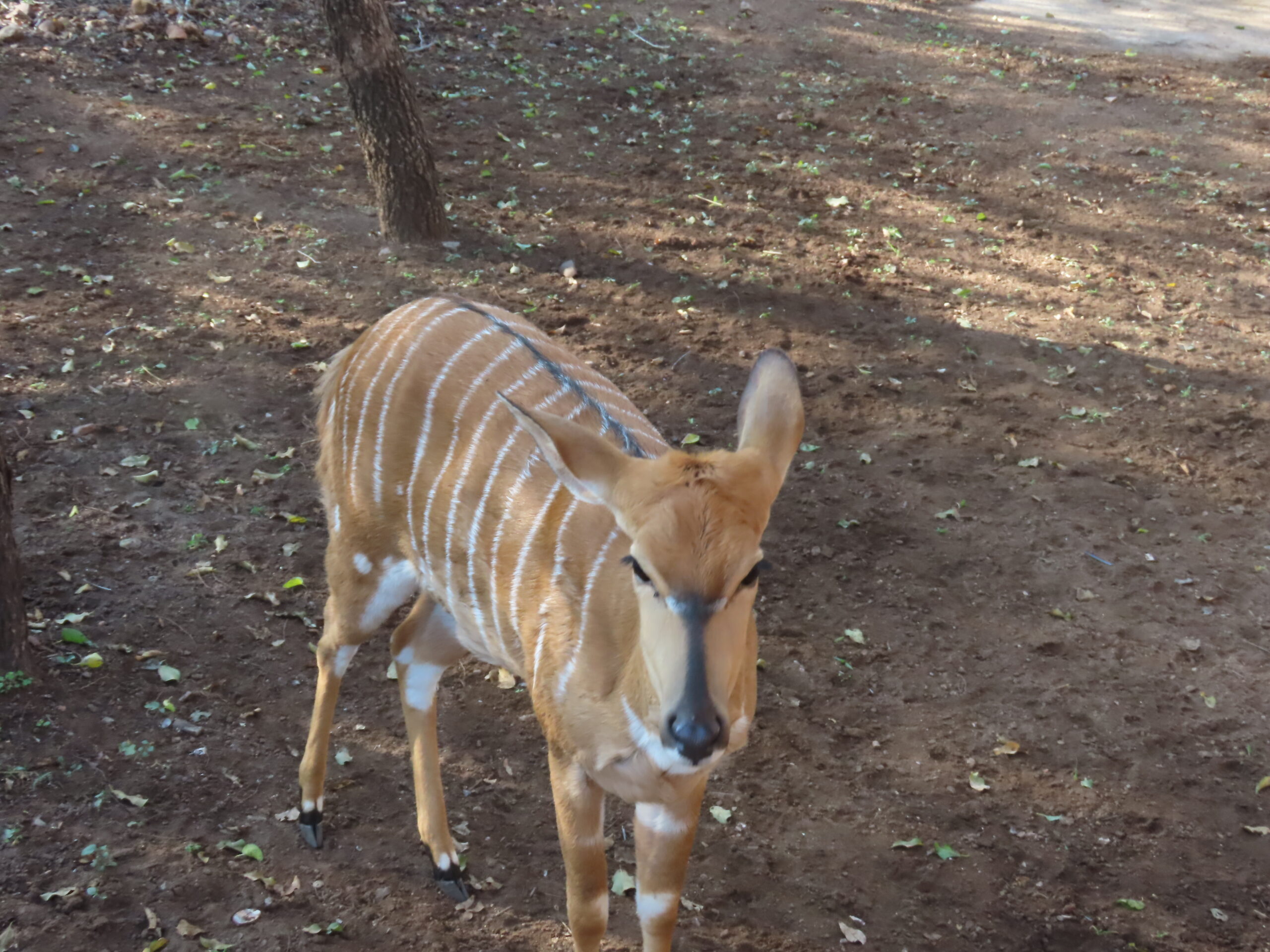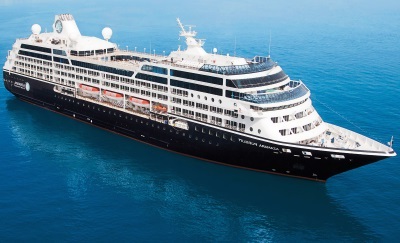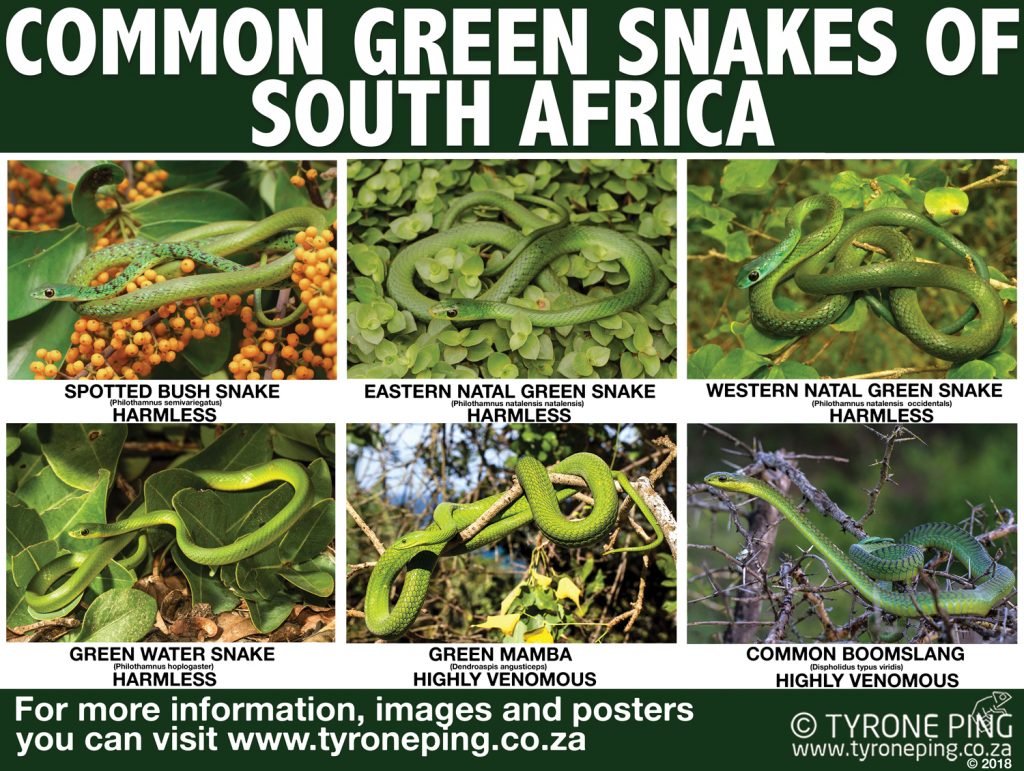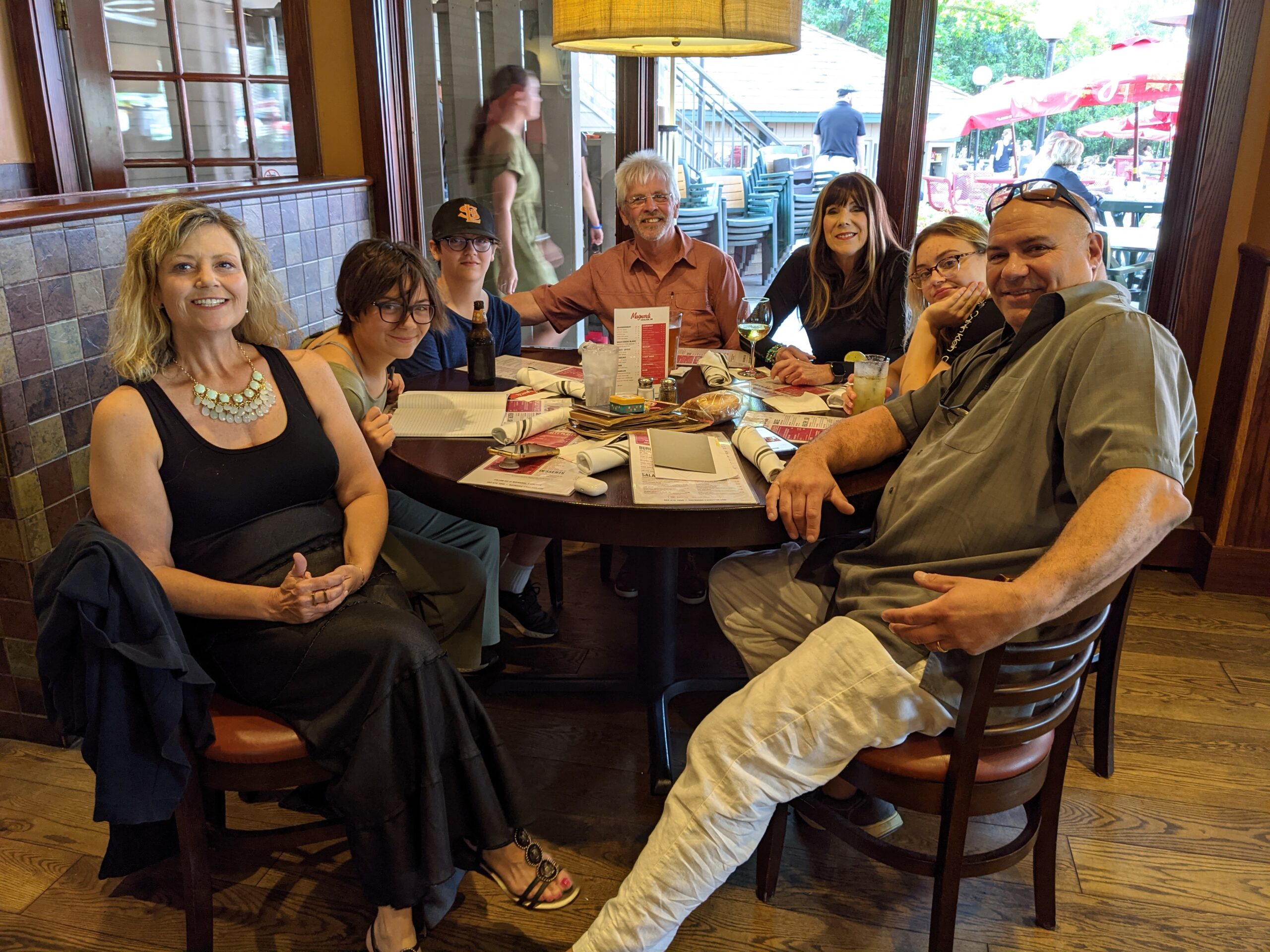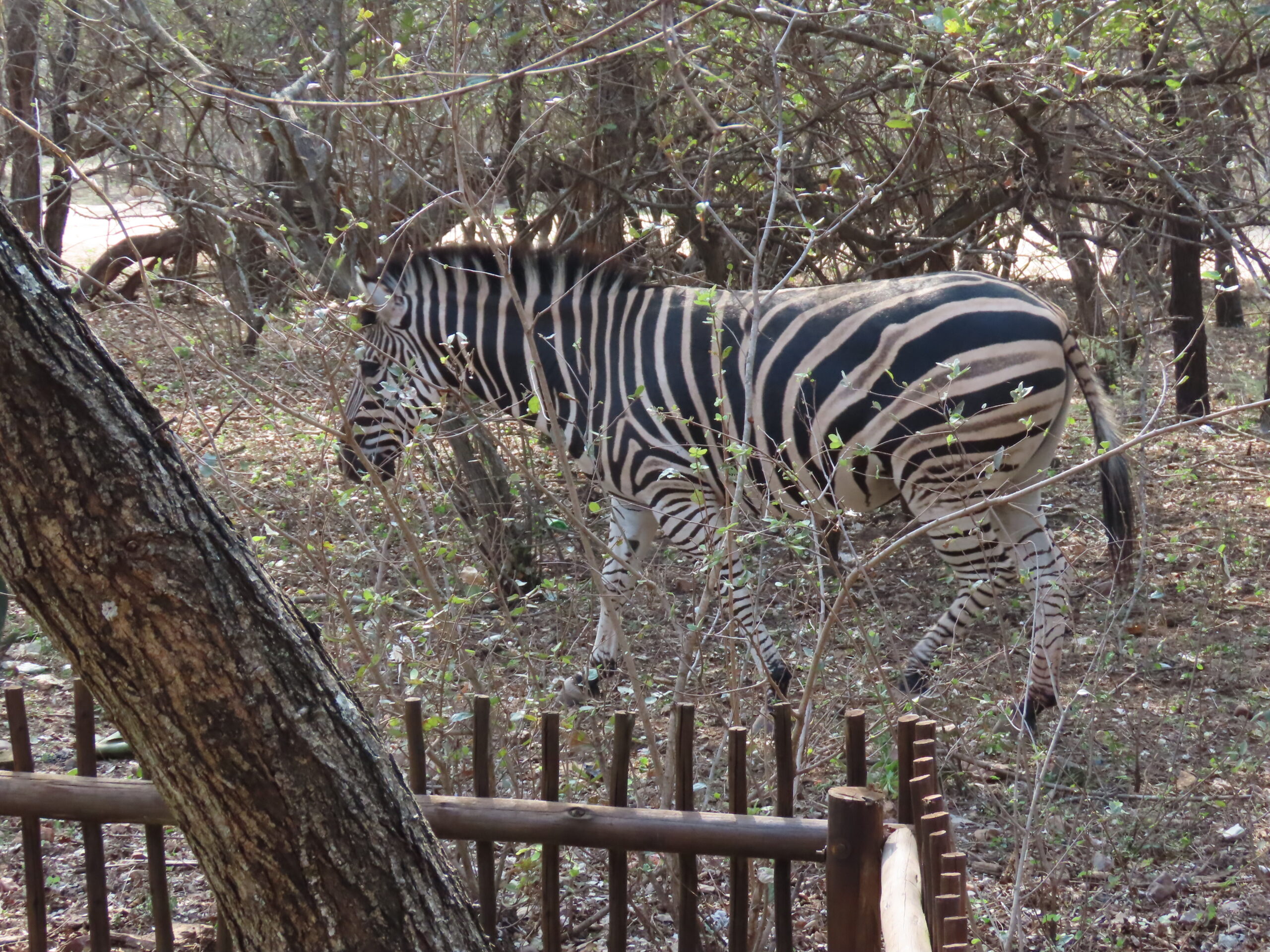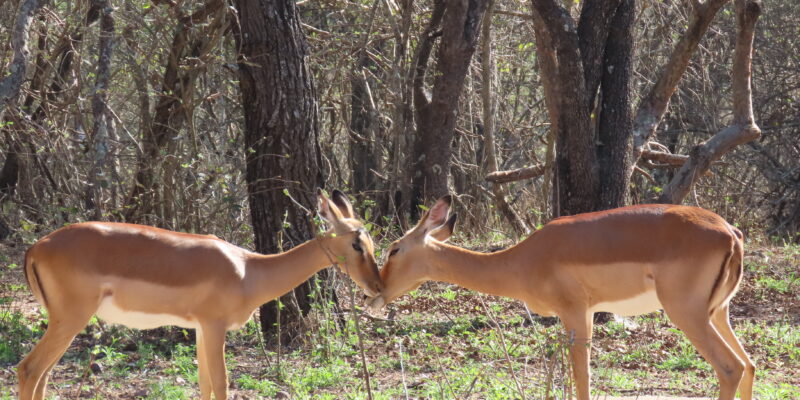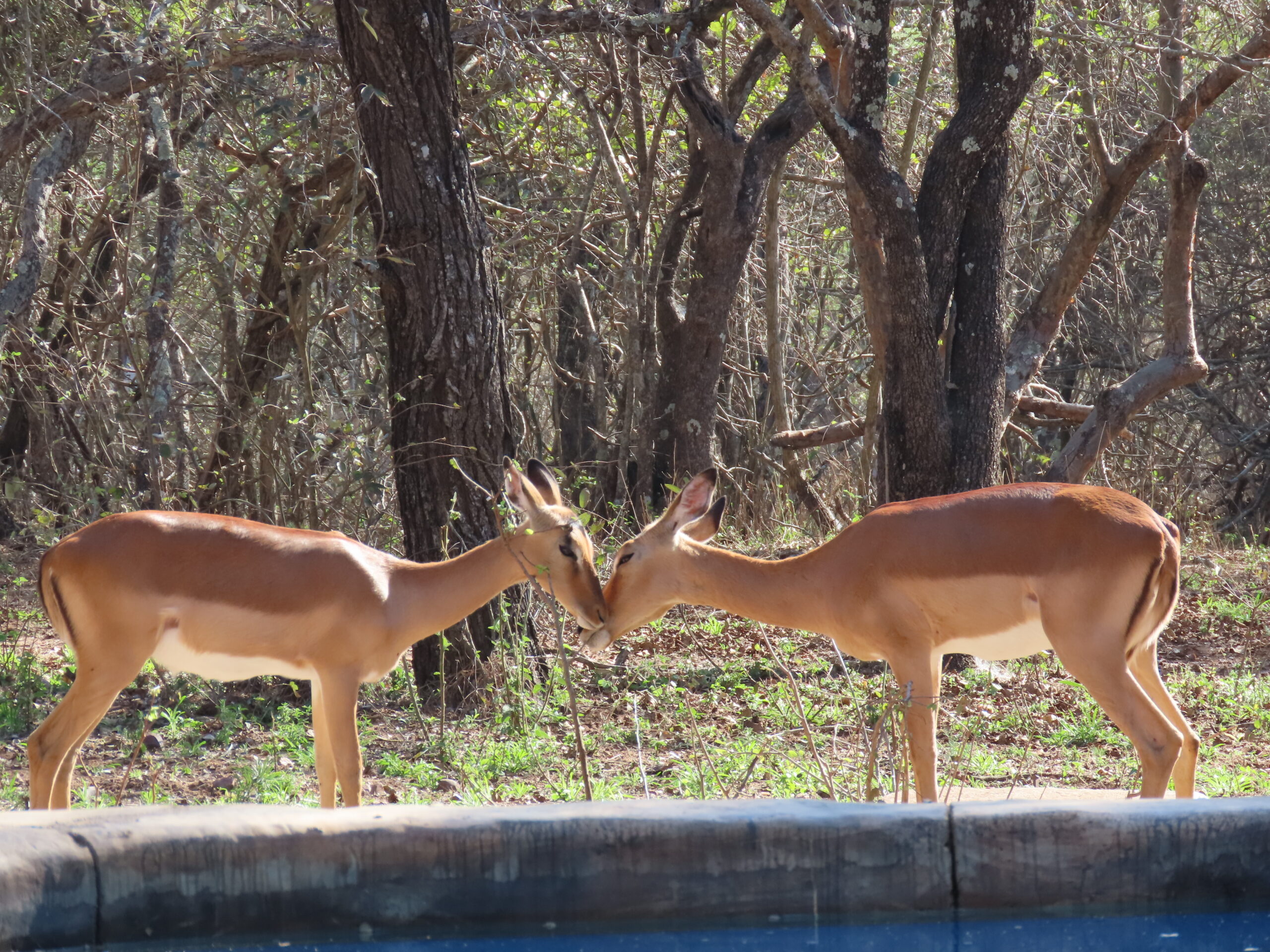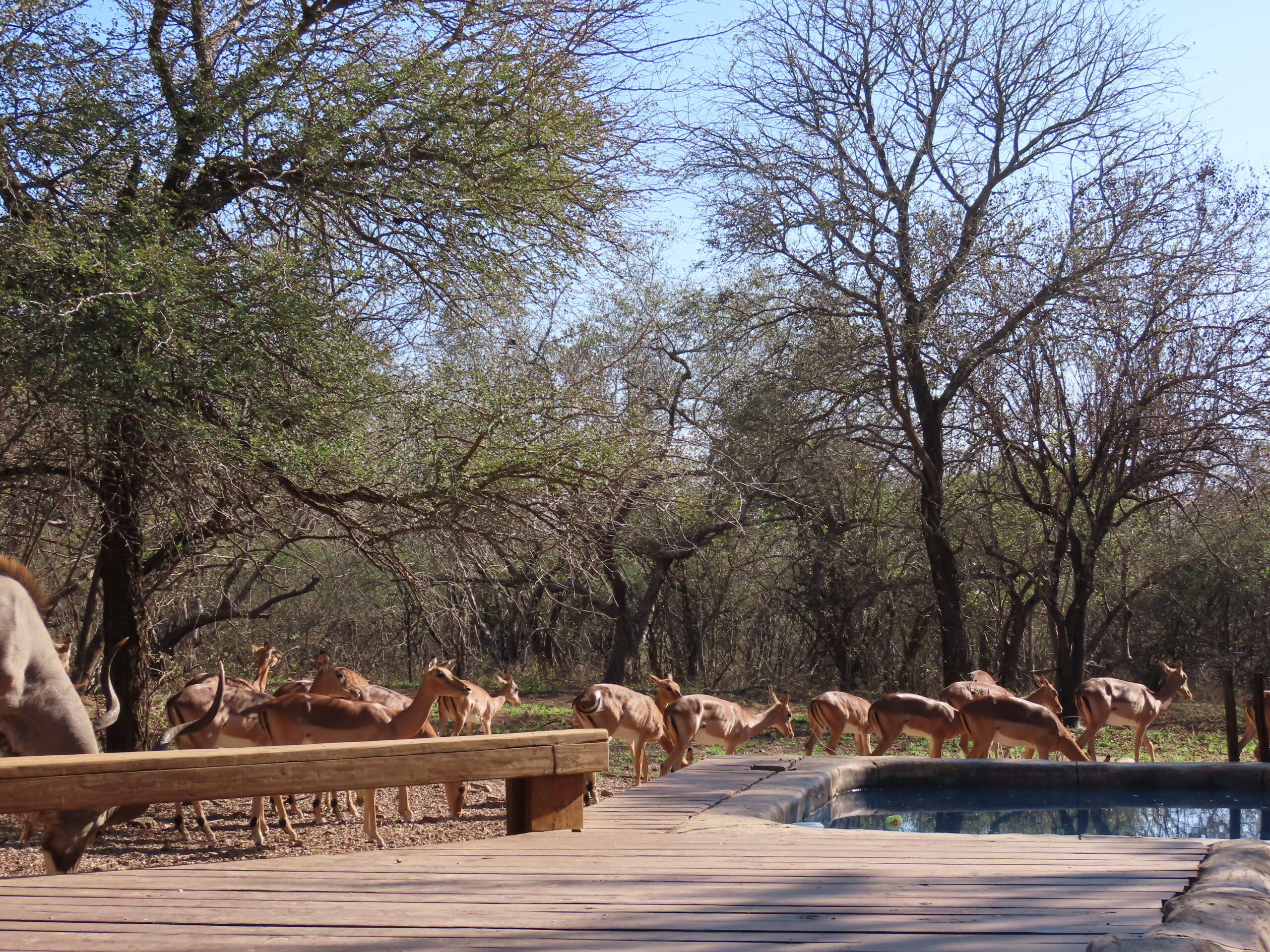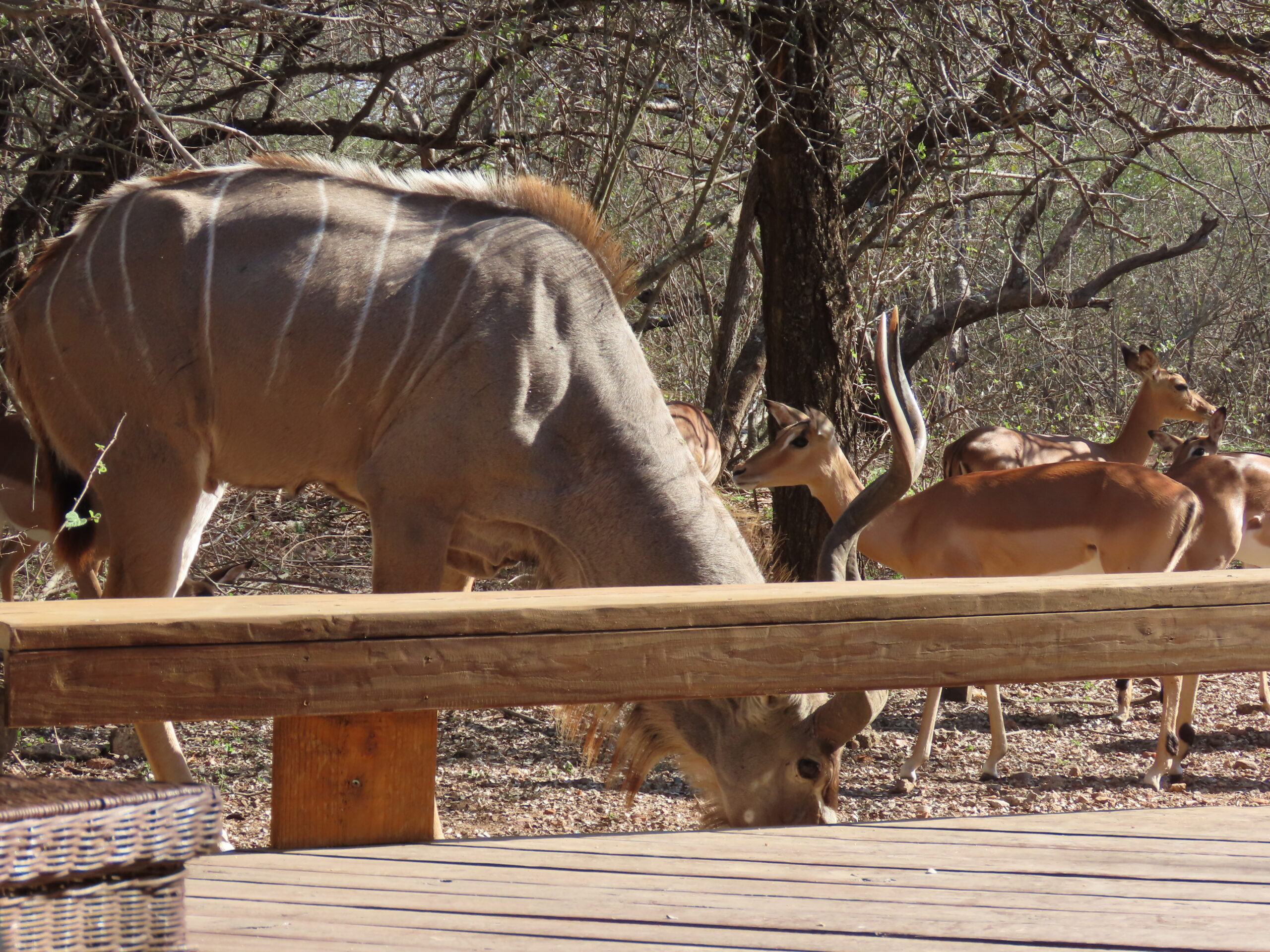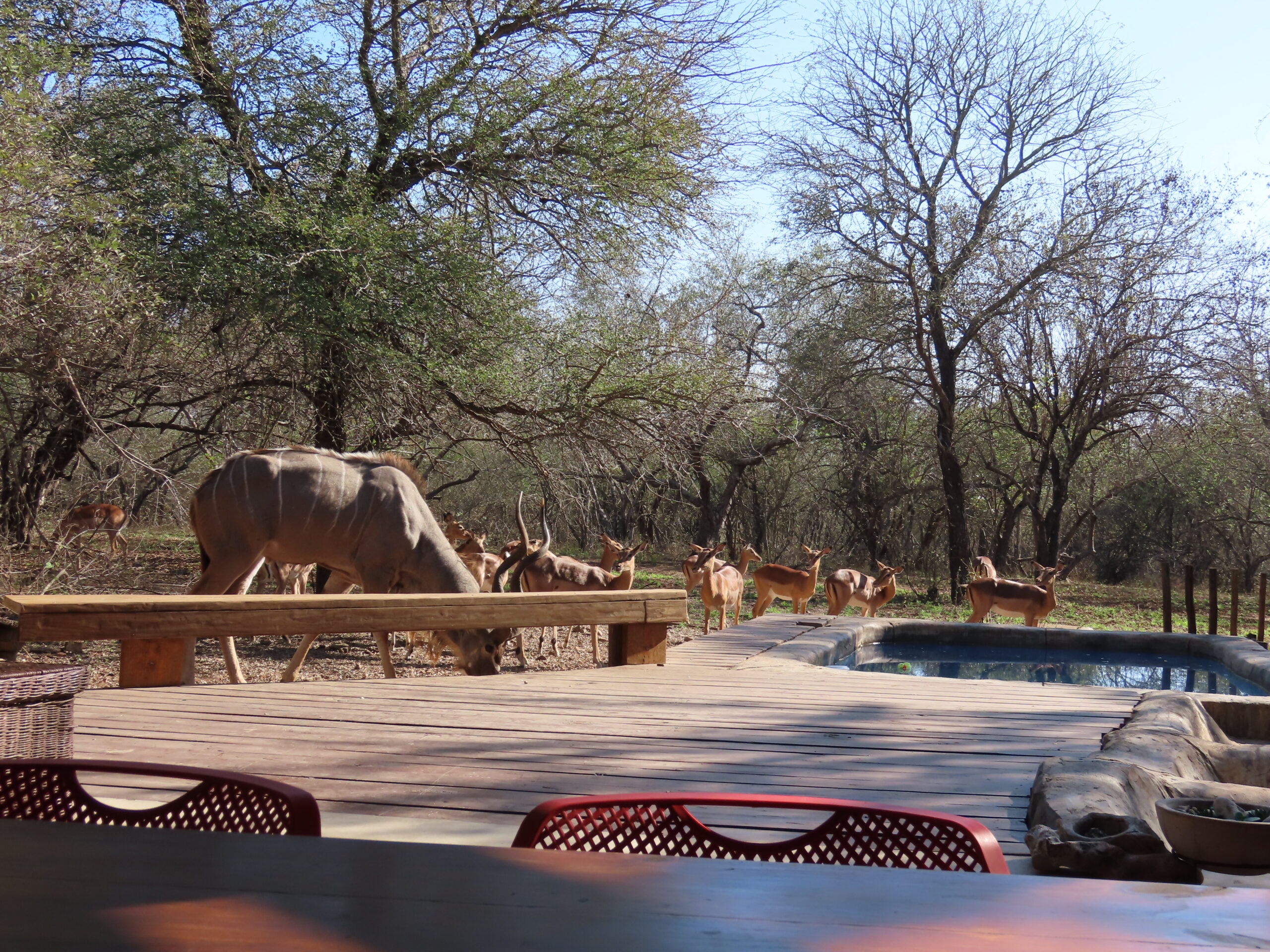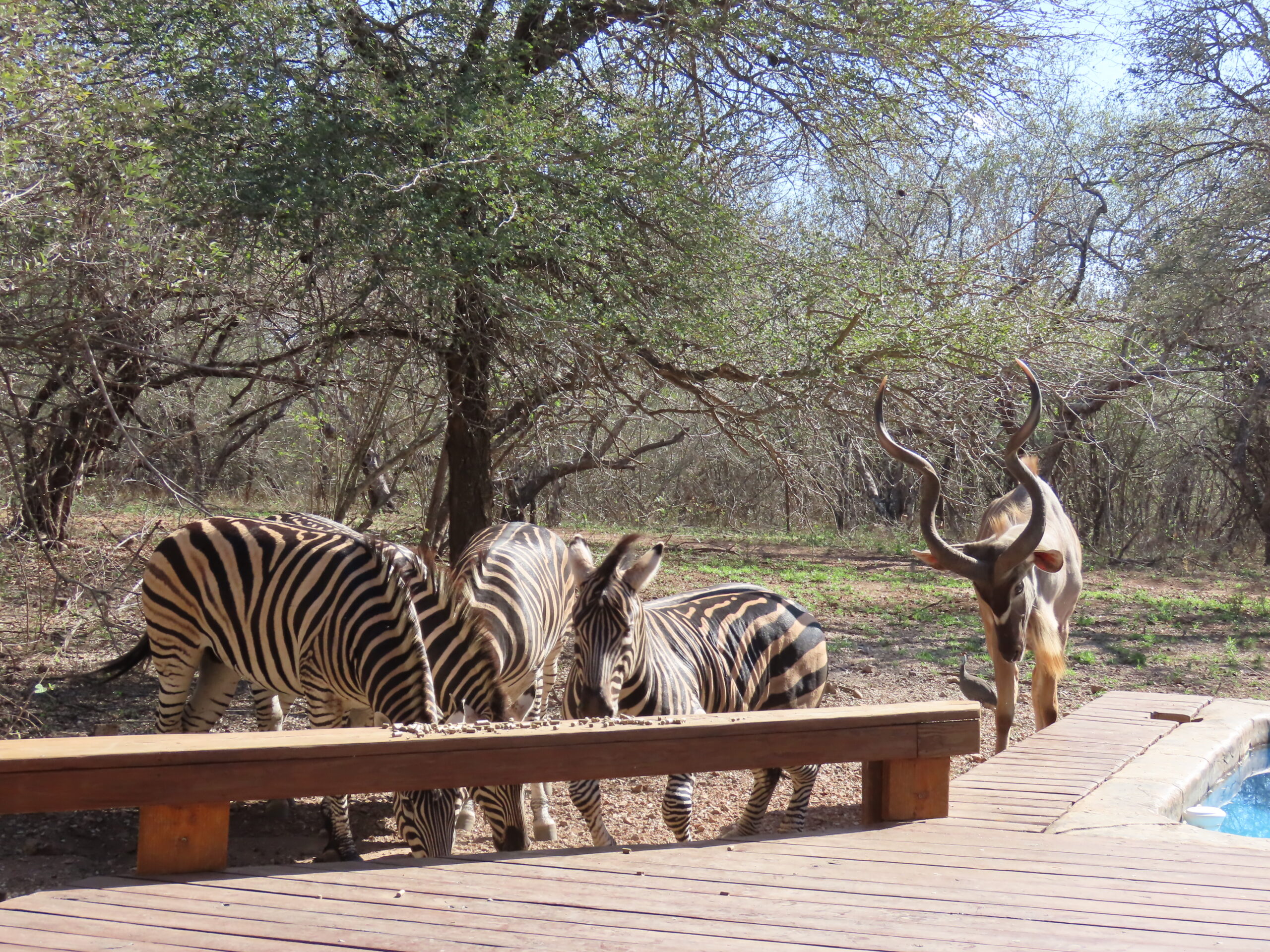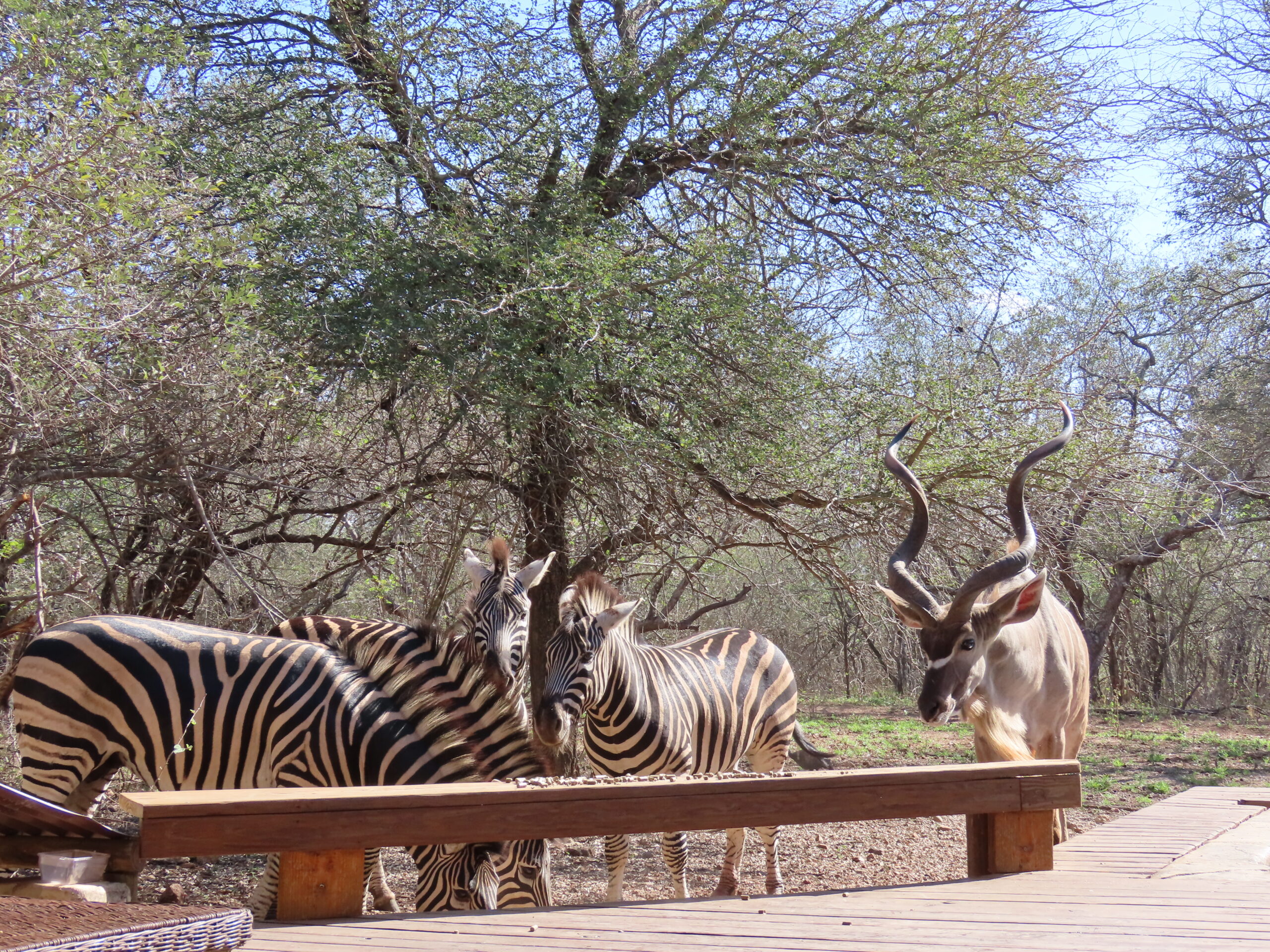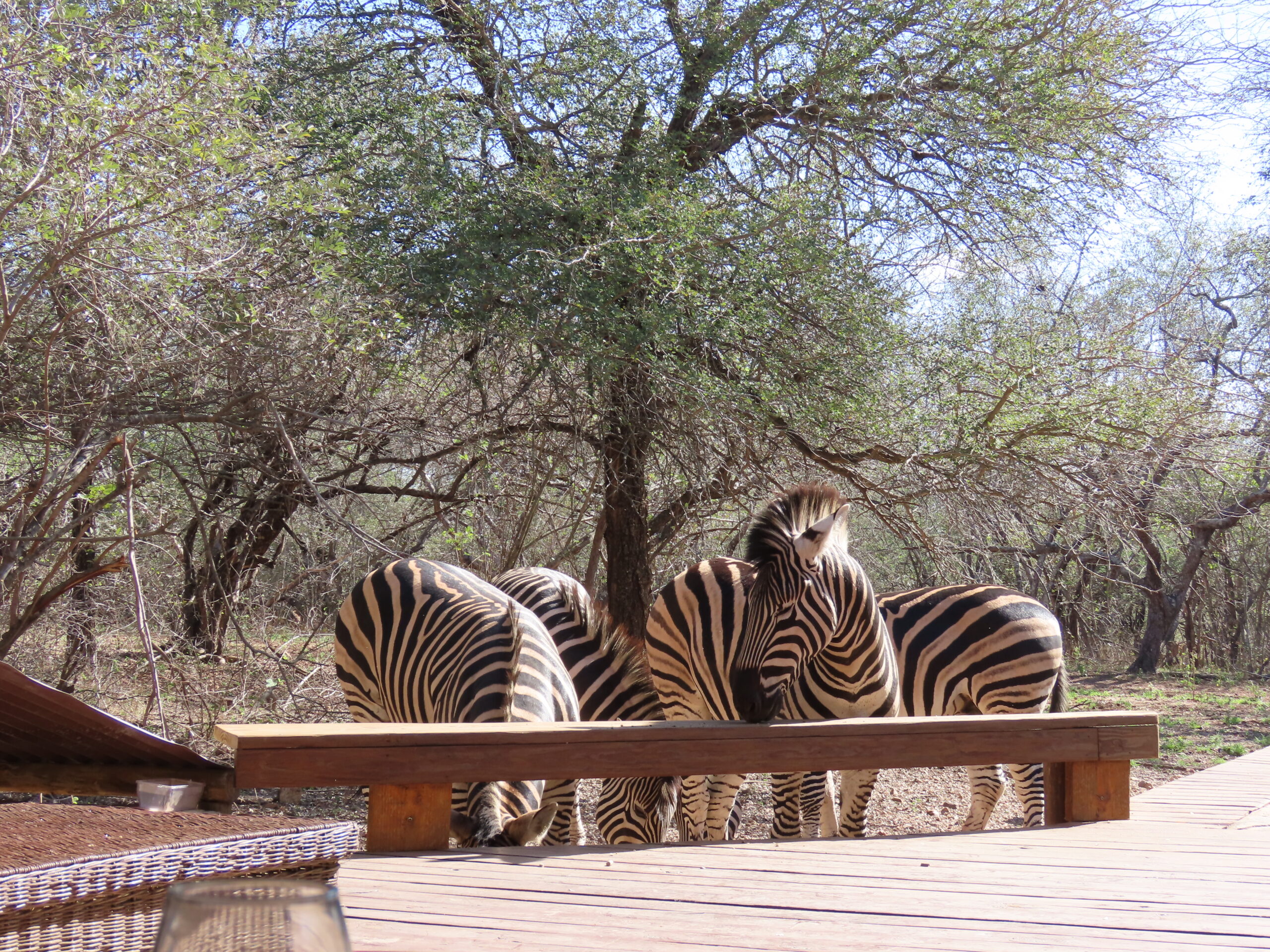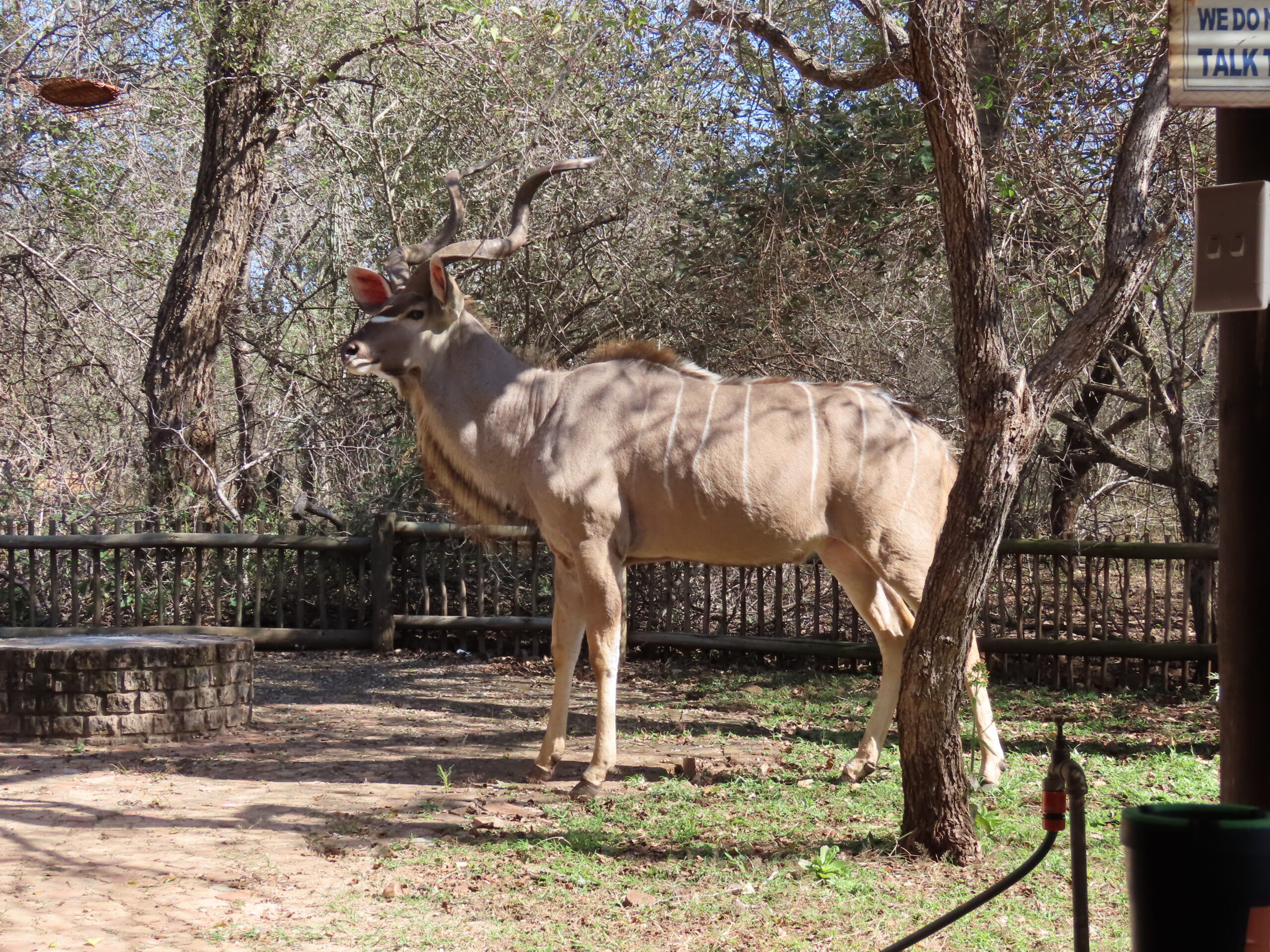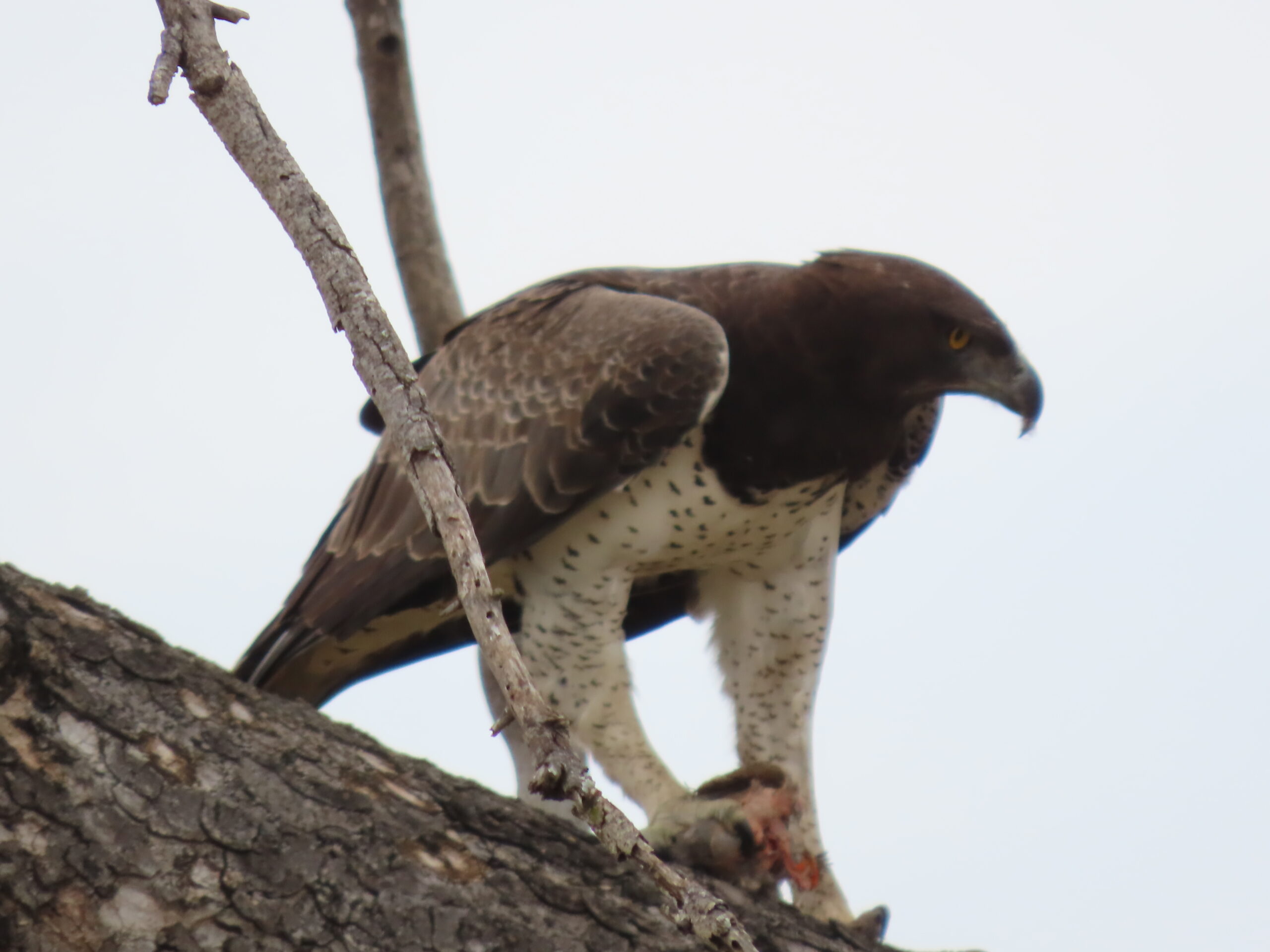
We were excited to have spotted so many interesting birds while in Kruger last Thursday. It’s tricky for us to identify them using the bird book we have on hand. I don’t like to pester our bird watching friends when I can find a particular bird in the book or online.
But, when I do find one on my own, I am thrilled. It was easy to find the bird in today’s main photo and to share the details of this species here from this excellent site:
“Martial Eagle
Latin Name
Polemaetus bellicosus.
Appearance
Martial Eagles are the largest of the African eagles and incredibly powerful, capable of knocking an adult man off his feet. They reputedly have enough power in one foot to break a man’s arm. The largest eagle in Africa, the Martial eagle weighs in at almost 14 pounds (6.5 Kg.) and has a wingspan of about 6 feet 4 inches. It is 32 inches long. The upperparts are dark brown with a white belly with black streaks, the legs are white and has very large talons. The immature bird looks quite different from the adult.
Diet
In some areas birds form an important part of the diet, including guineafowl, francolins, bustards, and poultry. Birds as large as a European Stork are recorded to have fallen prey to the Martial Eagle. In other areas the diet is largely mammalian, especially hyrax and small antelopes.
Animals as large as an Impala calf are taken, and some monkeys, also occasionally young domestic goats, and lambs. Carnivores like mongoose are sometimes taken, even occasionally Serval Cat and Jackal; also a few snakes and large lizards. It will evidently eat whatever is available, with a preference for game-birds, hyrax, and poultry. It is not known to eat carrion at all except possibly dead lambs.
Breeding
Martial Eagle nests are built invariably in trees, at any height from 20 to 80 feet above ground, but often in the largest tree in the area, growing on a steep hillside or in a gorge, where the bird has a clear sweep off the nest. Pairs have one or two nests, which are used in alternate years if more than one, but for successive breeding attempts if only one.
They are huge structures about four to six feet across and up to four feet thick, and often basin-shaped when new – much broader than they are deep. They are made of large sticks up to one-and-a-half inches in diameter, lined with green leaves. They may be used by a succession of birds for many years.
The Martial Eagle breeding season may thus begin in various parts of the range in a wet season, the early dry season, or late in the dry season, and some part of the cycle must extend through rainy periods. Incubation is normally done by the female, but a male has been known to sit. The female leaves the nest to feed and is not usually fed by the male at the nest. The incubation period is probably about 45 days. The young is very weak and feeble when first hatched, but becomes more active after about twenty days.
At 32 days feathers show through the down, and completely cover the bird at 70 days. The young Martial Eagle is fed by its parent till it is about 60 days old, and well feathered, when it starts to tear up its prey itself. During the early fledging period the female remains near or on the nest, and the male hunts and brings prey.
The female Martial Eagle remains in the area and receives prey from the male for about 50 days. After that she hunts or brings prey to the nest herself and the male seldom appears. The young one is closely brooded in its first few days, but after fourteen days the female does not brood it except at night.
The young bird, after making its first flight (at about 100 days), may return to roost in the nest for some days, and thereafter moves away from it. It remains loosely attached to the nest site for some time, and may be seen not far from it for up to six months.
Behaviour
The Martial Eagle is the largest eagle in Africa – this is a bird of the uninhabited stretches of thornbush and savannah found over much of Africa, occurring also in open plains and semi-desert country. Martial Eagles spend on average 85% of their time perched and take to the wing predominantly in the late morning (10am). This behaviour drops off sharply from around 3pm and is largely driven by thermal availability. Martial Eagles are thus also predominantly opportunistic perch and ambush hunters.
Martial Eagles will soar for hours on updraughts without hunting, and with a full crop, but it does most of its hunting from the soar also, killing or attacking by a long slanting stoop at great speed, or a gentle descent into an opening in the bush, the speed of the descent being controlled by the angle at which the wings are held above the back. It may kill from a perch, but does so seldom, and most of its kills are surprised in the open by the speed of the eagle’s attack from a distance.
A pair of Martial Eagles may have a home range of anything up to 50 square miles, and they wander about over most of it. They often hunt for several days in one area and then move on to another, since complaints of kills are often voiced for several days in succession in the same area. It is much shier than the other big eagles of Africa, and generally keeps away from man.
Although not migratory in the strict sense it makes local movements involving flights of several hundred miles, and a pair may not habitually be found near their breeding locality. It is by habit a hunter of game-birds and small mammals out in the open, but also preys upon man’s domestic animals, though it certainly kills much less than it is often accused of killing. Probably on balance it is a beneficial bird to man.
Where To Find Martial Eagles?
The Martial Eagle is found in the savannah and thornbush areas of Africa south of the Sahara, from Senegal to Somalia and south to the Cape. It is also found in open plains and semi-desert country, but not frequenting forest, although it occasionally breeds in forests on the edge of open country. The best place to see Martial Eagles in Kruger National Park is in the Lower Sabie area.”

Here is information on the African Fish Eagle also from this site:
“African Fish Eagle
Appearance
The African Fish Eagle is a fairly large eagle. It has a distinctive black, brown, and white plumage.
Diet
Although, as its name suggests, it feeds extensively on fish, in some areas it preys on flamingoes and other water birds. It is also known to eat carrion and is classified as a kleptoparasite (it steals prey from other birds). Goliath Herons are known to lose a percentage of their catch to Fish Eagles. Their main diet is fish, sometimes dead, but mostly caught live. Catfish and lungfish are caught most frequently. Larger prey are eaten on the ground next to the water.
Behaviour
The African Fish Eagle has two distinct calls. In flight or perched, the sound is something like the American Bald Eagle. When near the nest its call is more of a ‘quock’ sound – the female is a little shriller and less mellow than the male. So well known and clear is the call of this bird that it is often known as ‘the voice of Africa’. The African Fish Eagle is usually seen in pairs inside and outside the breeding season, even sharing kills made by either of them. They spend more time perched than flying, and usually settle for the day by 10am, having made their kill, although they will kill at any time of the day.
Habitat
It is most frequently seen sitting high in a tall tree from where it has a good view of the stretch of river, lakeshore or coastline, which is its territory. Near a lake with an abundant food supply, a pair may require less than a square mile of water to find enough food, whereas next to a small river, they may require a stretch of 15 miles or more. Some tend to move around to avoid the wettest weather, whereas others stay where they are all year round.
Where African Fish Eagle Are Found
The African Fish Eagle is widespread in Southern Africa. It is particularly common in and around some of the Rift Valley lakes.”
Then Tom captured this Goliath Heron as shown below, partially obscured in the tall grass but a fine sight to see as well.
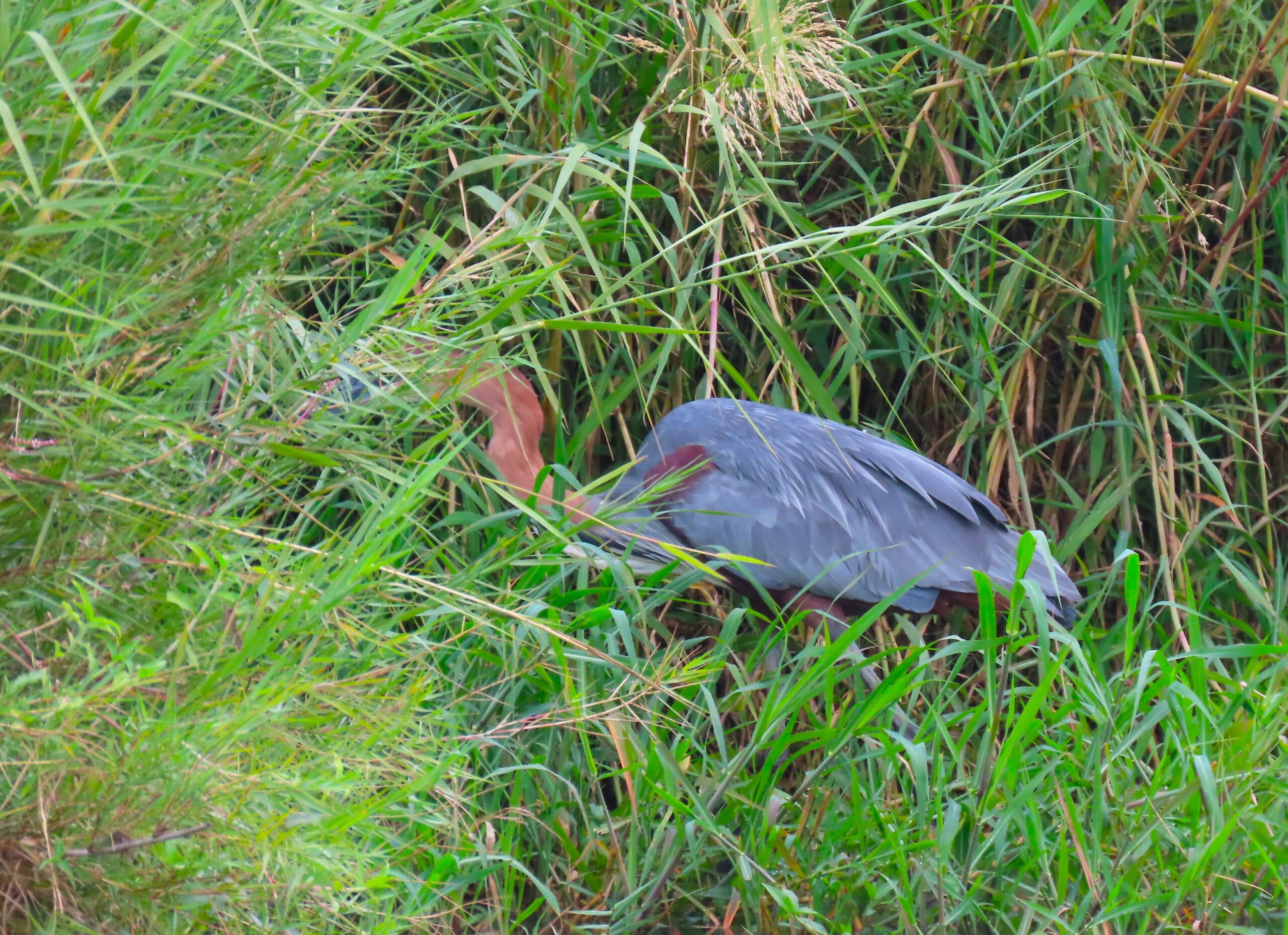
Here’s in formation on the Goliath Heron found on this site:
“Goliath Heron
The Goliath Heron (Latin name Ardea goliath) is described in Roberts Birds of Southern Africa, 7th Edition. This bird has a unique Roberts number of 64 and you will find a full description of this bird on page 590 also a picture of the Goliath Heron on page 592. The Goliath Heron belongs to the family of birds classified as Ardeidae.
The map of the Kruger you see on this page shows the areas (coloured orange) where this bird has been identified. The basic information was provided by the Avian Demographic Unit based at UCT and I created the maps from that information … the green dots show the locations of the various Kruger National Park Rest Camps
The Goliath Heron is neither Endemic or near Endemic to the Kruger National Park. It is however a common resident.
Main diet items for this bird
The Goliath Heron feeds on the ground and in or around water mainly: invertebrates, aquatic life forms
Breeding and nesting habits for this bird
The Goliath Heron is monogamous unless its mate dies. In the event of a partner dying Ardea goliath will seek out a new mate
The nesting habit of Goliath Heron is to create the nest in branches of a tree or shrub or on the ground. The bird lays eggs which are blue in colour and number between 2 to 5
Habitat and flocking behaviour for this bird
The preferred habitats for Goliath Heron are: wetlands and riverine areas
You can see Goliath Heron in flocks. The bird will often also be seen singly.”
In tomorrow’s post, we’ll share the balance of our photos from Kruger National Park. As you can see from our past posts, we had quite a good time in the park, spotting many amazing animals. We look forward to our next outing. We will make a point of avoiding posting repeated info for the wildlife to avoid redundancy.
We had a busy morning when the power went out but only at our house. Danie contacted an electrician who spent several hours making repairs, and now it is back on. What a relief. Now, we’re waiting for the appliance guy to come to fix the washer and main refrigerator. Although we are renting and aren’t responsible for such repairs, it’s excellent that Louise and Danie are so quick to respond when there are issues.
Yesterday afternoon, we had a delightful visit with reader/friends Marilyn and Gary, who were inspired to come to Marloth Park after reading our posts for years. They are experienced travelers, and we had an excellent get-together on our veranda. We’re looking forward to socializing with them again shortly while they spend almost two months in the park.
A special thanks to our friend Lynne, who lives part-time in Marloth Park and on Jersey Island. She and her husband Mick are the first couple we met on our first outing to Jabula in December 2013. They are the most enthusiastic and knowledgeable birders we know!
Be well.
Photo from one year ago today, July 26, 2021:
There was no post one year ago due to a travel day.

